A Florida State University Advancement publication for alumni, parents and friends
FALL 2023 Volume 15, Issue 2

A Florida State University Advancement publication for alumni, parents and friends
FALL 2023 Volume 15, Issue 2
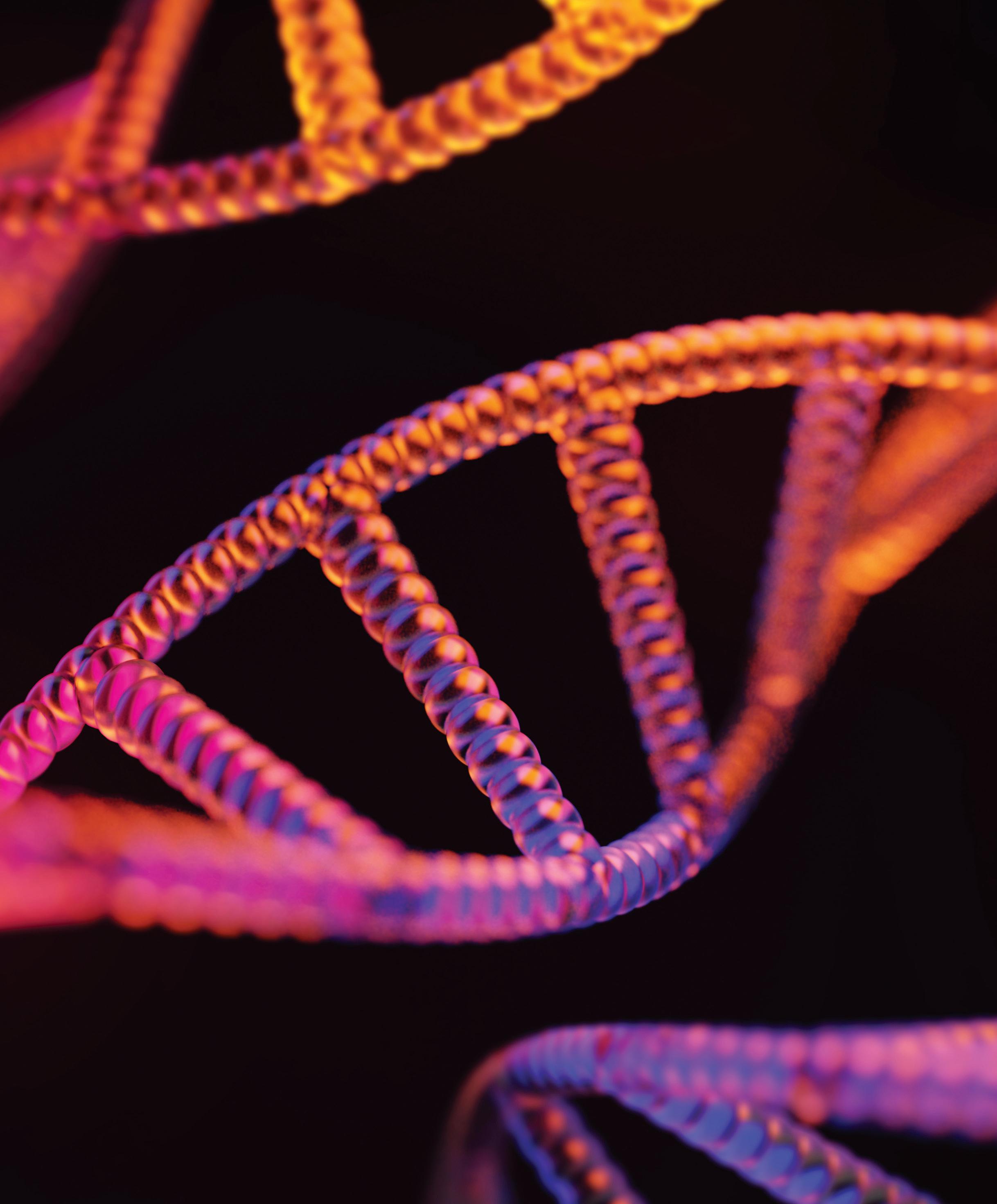



The National High Magnetic Field Laboratory (less formally known as the MagLab) is the world’s largest and highest-powered magnet laboratory. A collaboration between Florida State University, the University of Florida and Los Alamos National Laboratory in New Mexico, this unique facility has the power to advance not only basic science but is exploring new and exciting ways to use technology and engineering.

Fall 2023 Volume 15, Issue 2
An award-winning biannual publication from the Florida State Division of University Advancement. Named after the first torch in the university seal, VIRES represents strength of all kinds: physical, mental and moral.
PUBLISHER

Julie Decker
EDITOR-IN-CHIEF
Janecia Britt (B.A. ’17)
DESIGNER
Lindsey Masterson @penandtool
CONTRIBUTORS
Laura Barrera
Eric Butterman
Paul F. Brown
Emily Clemons MacMillan (B.A. ’17)
Kelli Gemmer (B.A. ’14, M.S. ’18)
Emily Halnon
Teaghan Skulszki (B.A. ’20, B.S. ’20)
PHOTOGRAPHY
Dave Barfield
Bill Lax (B.S. ‘90)
Erich Martin (B.A. ’11)
Sarah Tinter (B.S. ’20, M.S. ’21)
Advertise alumni.fsu.edu/advertise
Contact Us vires@alumni.fsu.edu
Submit a Class Note alumni.fsu.edu/class-notes
Get Involved alumni.fsu.edu/social
→ The cover of this issue showcases the double helix, a term used to describe the physical structure of DNA.

PAGE 28
The FAMU-FSU College of Engineering, a one-of-a-kind partnership providing world-class education
By Kelli Gemmer(B.A. ’14, M.S. ’18)
PAGE 38
A health care ecosystem poised to transform health care delivery in Florida
By Emily Clemons MacMillan (B.A. ’17)
PAGE 50
In this special anniversary section, we revisit the last seven decades of Homecoming at FSU.
ByJanecia
Britt (B.A. '17)
Iam so excited to introduce this special issue of Vires devoted to Science, Technology, Engineering and Mathematics, or STEM. As a scientist and an entrepreneur, I had long been aware of FSU’s storied tradition in these fields even before I came to Florida State University. I knew that the physics faculty included two Nobel Prize-winning physicists, Sir Harry Kroto and Paul Dirac, and of course, I knew that the university is the headquarters of the National High Magnetic Field Laboratory, which attracts researchers from around the globe to conduct experiments using the highest-powered magnets in the world.
What I have really come to appreciate is both the depth and breadth of FSU’s strengths in a wide range of STEM disciplines, and I am so proud. From aerospace to data science, health sciences to materials research, energy to the environment, our researchers are pushing the boundaries of their fields and tackling some of the most important issues of our time.
This year, FSU had the highest research expenditures in our history ($400 million), which will pioneer impactful studies to further scientific discovery and advance society. As we continue to grow the university’s research portfolio, we expect to continue our climb in record funding.
Since I arrived, we have invested over $375 million in STEM for capital projects, faculty recruitment and support and groundbreaking research, including several ambitious initiatives such as FSU Health, Quantum Science and Engineering, Magnetics Research, Cryo-EM (Cryogenic Electron Microscopy), Health Data Sciences and Aerospace.
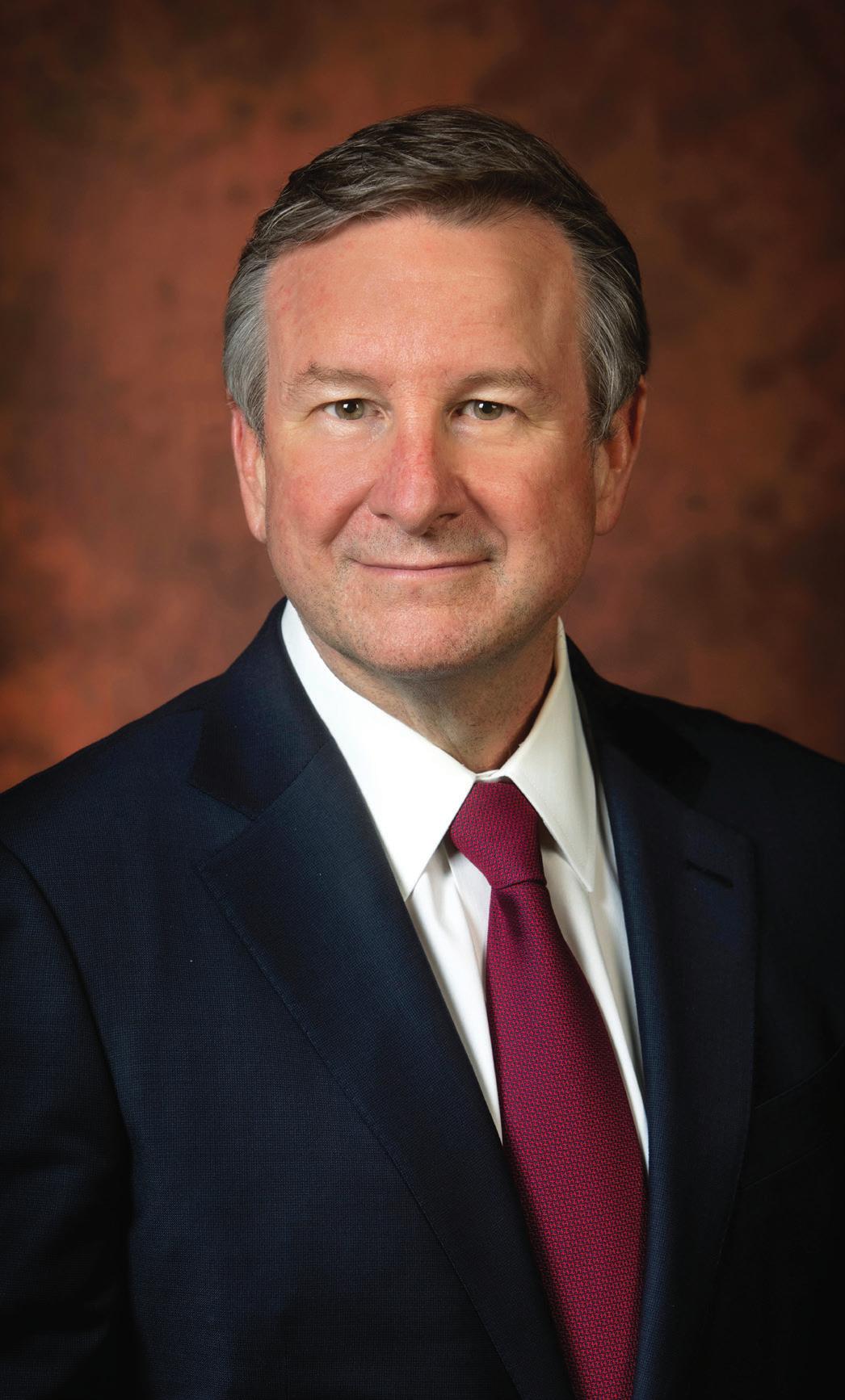
Our researchers are pushing the boundaries of their fields and tackling some of the most important issues of our time.
RICHARD MCCULLOUGH, PRESIDENT OF FLORIDA STATE UNIVERSITY
• FSU Health, one of the largest and most audacious projects in Florida State history, is a health care ecosystem that will transform patient care in communities across northern Florida. As part of this initiative, we are building a $125M academic health center on the Tallahassee Memorial HealthCare campus in Tallahassee. This 130,000-square-foot state-of-the-art research and medical facility will attract world-class physician-scientists to our area and doctors doing “bench to bedside” research to discover new diagnostics and therapeutics for clinical use. With FSU Health, we will improve and reshape medical care and education as we expand our Medical School to train future health care providers. We also are expanding our presence in the Panhandle by partnering with TMH and the St. Joe Company to build a new FSU Health-TMH Medical Campus in Panama City Beach, which will include an 80,000 square-foot medical office building, urgent care center and a 100-bed hospital. It is an important step in health care for Florida State and for the growing population in Northwest Florida.
• The Quantum Science and Engineering Initiative started as a collaboration between the College of Arts and Sciences, the College of Engineering and the MagLab with over $20 million in seed money for the next three years for the new program and support at least eight new faculty hires in the university’s new Interdisciplinary Research and Commercialization Building, which is currently under construction. With this investment, FSU is poised to become a major player in this emerging field of critical national and global importance. Using quantum science and engineering to develop breakthrough technologies could revolutionize the world. FSU is uniquely positioned to be at the forefront of this movement and train the next generation to be a quantum-literate workforce.
• Our Florida Center for Advanced Aero-Propulsion is a State of Florida University System Center of Excellence, and the testing facilities there are routinely used by major companies in the aircraft industry, such as Boeing, Lockheed Martin and L3Harris, for subsonic and supersonic wing testing. Our wide array of world-class facilities allows us to research environment and aviation safety and cutting-edge technologies for next-generation flight vehicles. These state-of-the-art facilities are paramount to designing new supersonic aircraft and, in general, safer aircraft with sustainable technologies. The center also performs research for the military, which is critical to national security. This year, we invested $2.5M in this incredible center to expand our ability in supersonic testing and push the boundaries of aerospace and aviation.
These are just a few examples of how we are strategically investing in STEM to advance the mission of Florida State University.
In this issue, you’ll have the opportunity to read about some of the extraordinary research and discoveries across campus and hear from our faculty about how their work is changing their fields and society. You will be able to take a deeper dive into FSU’s creation of a new health ecosystem, learn about the history of the FAMU-FSU College of Engineering and Dean Suvranu De’s plans for the college’s future, and read a message from the College of Nursing Dean, Jing Wang about the evolution of FSU’s nursing program. You will also learn about a unique living-learning community committed to women’s success in STEM fields. Vice President for Research Stacey Patterson will share details about her goal to expand the university’s research enterprise.
I hope you enjoy this special issue and are as excited as I am about the future of FSU and its impact on the world around us. I appreciate all you do to support FSU and our STEM programs, and I encourage you to attend one of the many open houses our science labs hold throughout the year or arrange a tour of the MagLab next time you visit campus.
I’m looking forward to seeing many of you in October for FSU’s 75th annual Homecoming! Go Noles!
 Richard McCullough President, Florida State University
Richard McCullough President, Florida State University

“Congrats to Ashley Arcidiacono (M.S. ‘21, Ph.D. ‘23) for receiving the 2023 Graduate Student Research & Creativity Award for the social & behavioral sciences category! Ashley was one of two students chosen to chair a session at a national @AmerChemSociety meeting in honor of Michael Kasha.”

Congrats to the entire class of 2023!! Our oldest, Logan, just graduated and is now a 2nd generation Seminole in our family!! Twenty-six years ago, my wife and I walked at our commencement ceremony, and we look forward to our daughter walking in 2026!! Go Noles!!
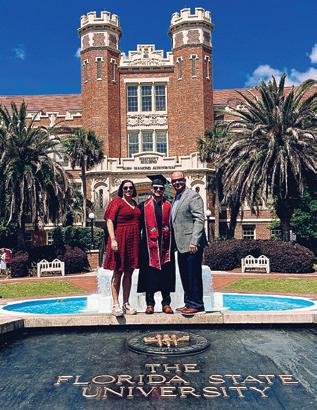 Aaron Solomon (B.S. ‘97), Director, Enterprise Sales
Aaron Solomon (B.S. ‘97), Director, Enterprise Sales

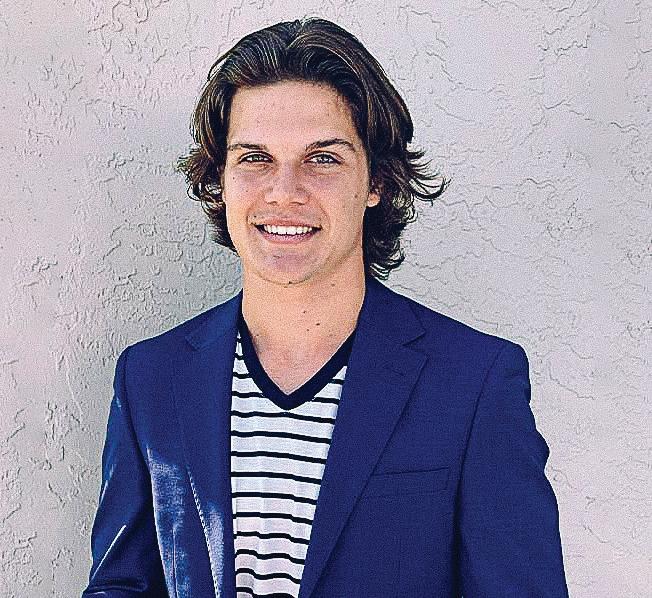
What was your go to study spot?
“I absolutely had to answer this question. I met my future husband, Rollie Harp (M.S. ’56), in a math class at FSU in 1955. We always got together to study in the basement of Dodd Hall. We were repeatedly reminded to be quiet because we were in the library. In 1956, I received my bachelor’s degree, and Rollie received his master’s. We were married that June and could talk all we wanted to. Thank you, FSU, for all you have meant to us through the years.”
Irell Harp (B.S.’56, M.S. ’59)
facebook.com/fsualumniassociation
@fsualumni
linkedin.com/company/fsualumni
Charlie Azzarito, a dual major in @fsuanthropology and @fsusociology, has earned the Hollings Scholarship from the National Oceanic and Atmospheric Administration (@NOAA). Visit news.fsu.edu to learn more about Azzarito’s work examining artifacts, compiling soil profiles from rivers and lakes, and how it can be used to study climate change.
@FSUAlumni
Youtube.com/FSUAlumni
vires@alumni.fsu.edu
 By Bill Wellock
By Bill Wellock
At the atomic and subatomic scales of matter, classical laws of nature lose control and quantum mechanics take over. Discoveries of new quantum phenomena and materials, such as quantum entanglement and topological systems, promise to deliver groundbreaking technologies. New extremely efficient quantum computers and communications and cryptography technologies are among a
few of the future applications that could revolutionize the world.
Florida State University will dedicate more than $20 million to quantum science and engineering over the next three years, funding that will support hiring at least eight new faculty members, equipment and dedicated space in the university’s Interdisciplinary Research and Commercialization Building and seed money for a new program focused on this emerging field. FSU President Richard
McCullough announced the investments at the university’s Quantum Science and Engineering Symposium last spring.
“It’s clear that FSU is uniquely positioned to be a leader in what is now being heralded as the second quantum revolution,” McCullough said. “We have the drive and the desire to expand our existing efforts so that we can be on the forefront of research in this area of critical national and global importance.”
The investments are part of the university’s
efforts to support the development of applications that exploit quantum mechanics to make engineering breakthroughs.
“We’re excited about building on our strengths in magnetism, quantum materials, superconductors, spectroscopy and cryogenics, just to name a few areas,” said Vice President for Research Stacey Patterson. “The university is committed to building on these programs by investing in the recruitment of top
national talent who can complement existing expertise and open new opportunities for faculty and students.”
The federal government has made expanding knowledge of quantum information science and developing new technologies a strategic priority. Agencies such as the National Science Foundation, Department of Defense, Department of Commerce, Department of Energy and others are part of the $2.6 billion National Quantum Initiative.

FSU researchers are already part of the endeavor to explore quantum science and engineering. For example:
• Professor of Chemistry and Biochemistry Eugene DePrince is leading a $4.4 million Department of Energy (DOE) project to help create software that can take advantage of supercomputer capabilities and advance quantum information science.
• FAMU-FSU College of Engineering Professor Wei Guo worked with DOE researchers to develop a new quantum bit platform, research that was published in the journal Nature.
• Professor of Physics Stephen Hill and Professor of Chemistry and Biochemistry Michael Shatruk are participants in a $10 million multi-institutional Energy Frontier Research Center, also sponsored by DOE.
Attendees at Florida State’s three-day Quantum Science and Engineering Symposium heard from nearly two dozen researchers from institutions such as Oak Ridge National Laboratory, Los Alamos National Laboratory, Amazon, Keysight Technologies, University of Florida, Georgia Tech, University of California Irvine, University of California Los Angeles and the
FSU-headquartered National High Magnetic Field Laboratory about their latest research.
“The quality of presentations at the symposium was exceptional,” Hill said. “There was also plenty of time devoted to discussion, with the aim of informing strategies going forward that will ensure FSU cements its position as a leader in quantum science and engineering research and workforce education.”
Quantum materials are the latest example of humanity’s search to develop better materials that will impact society, said MagLab researcher Ryan Baumbach, who spoke about his research into uranium-based materials. Consider steel, a well-established technology that is still being pushed forward today by scientists. Without the steel beams that make high rises possible, modern cities would look very different and couldn’t be organized in the ways they are now.
“New materials have impacts on society that we don’t necessarily predict ahead of time,” he said. “It’s absolutely true that some of these materials we’re discussing here could be useful for quantum computing, quantum sensors or particle accelerators. We also have the chance to discover new things that we can’t anticipate and that may have very big impacts.”
Along with the possibilities for learning more about subatomic physics and chemistry, quantum science holds great opportunity for developing new technologies and industry partnerships. Representatives from Amazon and Keysight Technologies spoke about the work their companies are doing in this field.
“Florida State faculty continue to innovate across academic disciplines, and quantum science offers another opportunity for them to continue their world-class work,” Provost Jim Clark said. “FSU’s investment represents a commitment to advancing knowledge in this field, and I’m excited to see what our faculty will develop as they move forward.” LEARN MORE
Ateam of Florida State University researchers have further developed a new generation of organicinorganic hybrid materials that can improve image quality in X-ray machines, CT scans and other radiation detection and imaging technologies.
Professor Biwu Ma from the Department of Chemistry and Biochemistry and his colleagues have developed a new class of materials that can act as highly efficient scintillators, which emit light after being exposed to other forms of high energy radiations, such as X-rays.
The team’s most recent study, published in Advanced Materials, is an improvement upon their previous research to develop better scintillators. The new design concept produces materials that can emit light within nanoseconds, orders of magnitude faster than previously developed materials, allowing for better imaging.
“Reducing the radioluminescence decay lifetime of scintillators to nanoseconds is an important breakthrough,” Ma said.
“Using a hybrid material made up of both organic and inorganic components means each component can be used for the part of the process where it is most effective.”
Scintillators are used in all sorts of imaging applications. Health care settings, security X-rays, radiation detectors and other technologies use them and would benefit from better image quality.
The new generation of organic metal halide hybrid scintillators developed by Ma’s team has numerous improvements over existing ones. In addition to significantly better radioluminescence response, the manufacturing process is simpler than the process used for other scintillators, and it uses abundant and cheap materials.
WHAT’S DIFFERENT ABOUT THIS SCINTILLATOR?

Think of a scintillator as a sort of translator between two types of energy,
taking a form of high energy radiation, such as an X-ray, and converting it into visible light. Less radiation passes through denser parts of an object, and that difference can be used to distinguish higher-density objects, such as bones or metal, from lower-density ones, such as soft tissue. The radiation that passes through an object then interacts with the scintillator, which generates visible light that is detected by a sensor to make an image.
Today’s scintillators use mainly inorganic materials to transform high energy radiation into visible light for producing images. These materials are rigid, use rare Earth elements, and require energy-consuming, hightemperature manufacturing processes.
Ma and his team have been working on zero-dimensional organic metal halide hybrids, with which they have performed pioneering research since 2018. These organic-inorganic hybrids are made of
small groups of negatively charged inorganic components, called metal halide clusters, and positively charged organic molecules. They’re “zero-dimensional” at the molecular level because the metal halide clusters are fully isolated and surrounded by organic molecules.
In the first version of scintillators based on this material, the metal halides absorb high energy radiation and emit visible light. In this latest iteration, metal halide components and organic molecules work together. The metal halides absorb high energy radiation and transfer energy to the organic components, which emit visible light.
Light emissions from organic molecules take place on the scale of nanoseconds, much faster than the microseconds or milliseconds required for metal halides to emit light.
“The faster the decay of radioluminescence, the more precise we can measure the timing of photon
emissions,” Ma said. “That leads to higher resolution and contrast in images.”
With the help of the FSU Office of Commercialization, Ma and his team have filed patents on organic metal halide hybrid scintillators. The office’s GAP Commercialization Investment Program provided funding to develop the technology for potential partnerships with private companies, which would make the scintillators available on a wider scale.

“This is a continuation of our push for better materials over the years, from 2018, when we first discovered this class of materials, to 2020, when we used them for scintillation for the first time,” Ma said. “This is another major breakthrough.”
LEARN MORE chem.fsu.edu
Researchers from Florida State University and Florida A&M University are partnering with the government of Honduras on an international, interdisciplinary project to improve health care in rural Honduran communities.

The Global Health Collaboration Project, or GHCP, is an initiative of FSU, FAMU and the medical school of the National Autonomous University of Honduras. Researchers with the project signed a memorandum of understanding with the Honduran Ministry of Science, Innovation and Technology, or SENACIT, to develop a health collaboration center in the country.
“Our goal is approaching public health problems in Honduras through the lens of scientific collaboration,” said Charles Fleischer, director of FSU’s Center on Global Health and a GHCP co-principal investigator.
“Research at the center will inform interventions for improving patient care, mitigating potential harms and addressing acute and chronic conditions in ways that are culturally cognizant, feasible, scalable and sustainable.”
Along with physicians, GHCP includes researchers specializing in pharmacy, public health, nursing, engineering, social work and biomedical sciences. SENACIT will share data collected during its work to improve the availability of health data in Honduras and help the center’s mission.
Researchers at the center will work with local populations to learn more about their culture and specific health circumstances and needs. This will provide insight for health care professionals to develop interventions designed for patients. Including input from the populations that the interventions are meant to serve respects their autonomy and makes it more likely that treatment will be effective, Fleischer said.
For example, consider high blood pressure. Non- medication approaches, such as adopting diets designed to treat the condition, have been shown to improve blood pressure and reduce the risk of stroke, heart disease and other chronic conditions. But physicians prescribing such an approach need to take into consideration what patients already eat and what food is available and affordable for them.
“Understanding the dietary practices of the population you are serving is extremely important, because what you’re doing in one area will not always work well in another area,” Fleischer said.
Along with helping to meet patients’ health care needs, the center will provide a learning opportunity for students from the United States and Honduras.
“This interdisciplinary research collaboration between universities in the U.S. and Honduras provides professional development opportunities for students and faculty,” said Fatimah Sherbeny, FAMU assistant professor and co-principal investigator.
“It also highlights the importance of diversity, in skills, backgrounds and expertise, in establishing a comprehensive project to improve patient health outcomes in disadvantaged communities.”
For students from FSU and FAMU, potential future opportunities with the center are an opportunity to challenge themselves and grow as researchers and medical professionals.
“It is a unique experience for students from all our programs involved to interact, hear from and learn from each other and from different backgrounds and environments,” said Sunny Narayanan (B.S. ’08), FSU researcher and co-principal investigator. “This provides perspective, insight, and expands everyone’s understanding of health, culture and our world.”
Diners with discerning tastes may be keen to order an entrée featuring shrimp harvested from the waters of the Atlantic. Or perhaps they prefer a Pacific crustacean.
But restaurant-goers beware: As the most consumed and highest imported seafood in the U.S., shrimp are vulnerable to food fraud, species substitution and mislabeling.
To help combat the issue, researchers within Florida State University collaborated with seafood industry representatives to develop a quick and cost-effective authenticity test to identify Atlantic white shrimp.
Assistant Professors Prashant Singh and Leqi Cui, and graduate students Samuel Kwawukume and Frank Velez from the Department of Nutrition & Integrative Physiology detail the process in a paper published in “Food Chemistry: Molecular Sciences.”
“Looking at the industry, there’s not much time for laboratory testing, but there’s always a need for rapid tests,” said Kwawukume, a master’s student who spent five years working as a food scientist prior to joining the Singh lab.

Species identification is typically a five-day process that involves shipping samples overnight to a testing lab for extensive DNA extraction and analysis. The new test developed by the FSU team can generate results on-site at restaurants, markets, and other facilities in as little as two hours.
Even though species substitution is against Food and Drug Administration (FDA) regulations and federal law, shrimp substitution rates as high as 30% or more have been reported.
“As you move to bigger cities, the number increases,” said Singh, whose lab has been conducting shrimp species identification testing for seafood industry representatives over the past two years. “Wholesalers are selling the right products, but as you move to restaurants and smaller markets, that’s where a lot of the challenge is.”
Atlantic white shrimp are one of the most economically valuable shrimp species in the southern U.S., making them particularly prone to substitution. They are harvested from North Carolina to Florida and along the Gulf of Mexico. With such high demand, less expensive imported shrimp species have been used to substitute Atlantic white shrimp — such as Pacific white shrimp.
Typically, seafood experts can identify shrimp species based on physical characteristics. However, with processing, shrimp are often peeled and deveined, making identification challenging.
“When you peel the shrimp, they look similar,” Singh said. “That’s why industry wants a method they can use at their location without the use of any advanced equipment to confirm the species.
They don’t have resources for a fancy lab or expensive equipment, they don’t want to send off samples and wait five days for results, which can be an expensive process for them too.”
Proper identification and marketing of shrimp species is important for consumer safety.
“Each species has different allergens, so if you substitute, you could introduce allergens,” said Kwawukume. “It also has an economic importance because Atlantic shrimp is very expensive compared to many other species, and in the case of substitution, the consumer isn’t getting the value they paid for.”
The new authenticity test involves the use of a lateral flow strip — or test strip – and a handheld PCR device to extract a DNA sample from the shrimp. When a test strip is placed into the DNA sample solution, it produces a band on the strip confirming the presence of a gene specific to Atlantic white shrimp, indicating a positive result.
The test can detect the species in both raw and cooked samples. The research team is hopeful the test will be adopted and successful within the seafood industry. Meanwhile, they are working to develop authenticity tests for other seafood such as red snapper and fish species prone to substitution.
← From left, Yuan Li, an assistant professor of Electrical and Computer Engineering; Eren Ozguven, associate professor in Civil and Environmental Engineering; and Simon Foo, a professor of Electrical and Computer Engineering at the FAMU-FSU College of Engineering. The trio have been working on the project of studying modular photovoltaic energy systems to help restore power quickly after natural disasters. Photo by Mark Wallheiser/FAMUFSU College of Engineering
Ateam of researchers from the FAMU-FSU College of Engineering is developing a modular solar electricity system that can help communities keep electricity flowing during natural disasters.
The work is part of a U.S. Department of Energy (DOE) initiative known as the Renewables Advancing Community Energy Resilience (RACER) program, which aims to increase resilience to disasters by using renewable energy.
DOE dedicated $33 million to funding 20 research projects across the country for research to help communities plan their transition to a clean energy future and improve grid reliability and security. This project will receive $3 million in funding.
“Extreme weather can knock power out for a few days, especially if it damages crucial parts of electricity infrastructure,” said Yuan Li, an assistant professor in the Department of Electrical and Computer Engineering who is leading the project. “Our solution is to develop a system that duplicates that crucial infrastructure as many submodules, so an electric system can keep working even if part of it is compromised.”
Li and her team are developing lightweight, compact inverters for solar power plants. The inverters, which convert direct current to alternating current, help regulate the flow of electricity from power plants to the electric grid.

They are small enough that a team of two people can set them up without heavy equipment, allowing solar power plants to quickly restore electricity in the wake of disruptions, such as the hurricanes that batter Florida during the summer.
This inverter will have identical modules that handle different sections of a solar power plant. If severe weather damages part of the inverter, the remaining modules will continue functioning. The technology also allows workers to replace the failed part while the rest of the inverter system is generating power.
Along with fellow faculty members from the Department of Electrical and Computer Engineering, the team includes researchers from the college’s Resilient Infrastructure and Disaster Response Center and Florida State University’s Center for Advanced Power Systems. They also will work with the City of Tallahassee, Northeastern University and the National Renewable Energy Lab on the project.
“Building community resilience to handle natural disasters is an interdisciplinary problem,” said project member Simon Foo, a professor in the Department of Electrical and Computer Engineering. “Disaster affects so many aspects of a community, so our response to it needs to take that into account.”
LEARN
MORE caps.fsu.eduThe Center of Population Sciences for Health Equity (C-PSHE), housed in the FSU College of Nursing, is working with the Center for Applied Research on Men and Community Health (CARMAH) in Vietnam on a project that aims to reduce minority stress and HIV stigma among gay and bisexual men. The project is funded by a grant from the Fogarty International Center at the National Institutes of Health (NIH).
“International collaborations are crucial in the globalized world and addressing challenges such as HIV/AIDS requires a collective effort and an understanding of interconnectedness,” said Frankie Wong, founding director of the C-PSHE and the McKenzie Endowed Professor of Health Equity Research in the College of Nursing.
CARMAH was established in 2013 by a group of activists including Dr. Donn Colby, a senior research physician at the U.S. Military HIV Research Program who holds a courtesy appointment in the FSU College of Nursing. The organization focuses on providing
sexual minority individuals with health care information and services, particularly related to HIV testing and sexual health.
Dr. Rochelle Walensky, director of the Centers for Disease Control and Prevention, visited CARMAH in March as part of the 20th anniversary of the U.S. President’s Emergency Plan for AIDS Relief (PEPFAR). CARMAH has adopted the strategy of PEPFAR to provide tailored HIV services and create a future where all individuals can lead healthy and fulfilling lives. Vietnam was one of the original countries, and the only Asian country, included in the first PEPFAR cohort.
The partnership between CARMAH and FSU’s C-PSHE began when Wong and Colby co-wrote a successful proposal to the NIH. This collaboration has led to the implementation of a two-year intervention study funded by the NIH that aims to reduce stigmatization associated with sexual orientation and HIV among gay and bisexual men in Vietnam.

The study draws inspiration from a program developed by John Pachankis, the Susan
Dwight Bliss Professor of Public Health and director of the LGBTQ Mental Health Initiative at Yale University. While Pachankis’ program involves one-on-one interventions conducted by licensed clinical psychologists, the adaptation developed by Wong and Colby explores the effectiveness of a group intervention approach.
Initial data collection and focus group discussions indicate that individuals in Vietnam prefer group settings, where they can share stories and find support from peers facing similar challenges related to family acceptance and disclosure of their sexual orientation.
“In a country like Vietnam, it’s a collective country, so individual therapy isn’t something people are used to,” Wong said. “So, I said, let’s try to do it in a group.”
Vietnam, like many other Asian countries, has cultural norms influenced by Confucianism, which places importance on family and traditional values. While same-sex relationships are not criminalized in Vietnam, the cultural emphasis on family and marriage may present challenges for full societal acceptance. However, compared to other countries with strong religious influences, such as the Philippines and Indonesia, Vietnam demonstrates relatively more openness and acceptance toward homosexuality.
Wong, who has previously worked in countries like China, Russia, South Africa, and Tajikistan, emphasized the importance of international collaborations in finding innovative solutions and promoting health equity worldwide.
“We are in a global environment now,” Wong said. “We are no longer in the 16th century. We must find a way to understand our interconnectedness and find similarities to solve problems together.”
LEARN MORE cpshe.fsu.edu
This summer the university began the merging of the College of Education and College of Health and Human Sciences, strategically positioning both colleges for future success.

“The realignment of these units creates opportunities to support the research, teaching and service mission of the university through combined expertise and resources,” said FSU Provost and Executive Vice President for Academic Affairs Jim Clark. “By taking this action, we will create a strong single entity that is in the best interest of both colleges — today and far into the future.”
Damon Andrew (Ph.D. ’04), dean of the College of Education and interim dean of the College of Health and Human Sciences, serves as the inaugural dean of the combined college.
“Dean Andrew has provided effective leadership for both colleges, and I’m confident he will continue to do so during this transition and beyond,” Clark said. “He
is an excellent advocate for faculty, staff and students.”
Andrew is excited for the new endeavor.
“During my time serving both colleges this academic year, I have noticed so many opportunities for collaboration and synergy that would benefit not only the many constituents in both colleges but society at large,” Andrew said. “I very much look forward to capitalizing on the increased opportunities for research, teaching and engagement that a combined college will be poised to provide.”
Focus groups led by Vice President for Research Stacey Patterson and Vice President for Faculty Development and Advancement Janet Kistner generated positive discussions and feedback about the possibility of combining the colleges and the benefits that could result from this expansion. Clark brought the proposal to President Richard McCullough, and received full support for the move.
“It is clear to me that both colleges possess unique strengths. But they also share a common focus on enhancing quality of life for all ages across the lifespan, and an expanded college offers the best opportunity to achieve synergy in respect to this shared focus,” Clark said.
Several prominent universities around the country with similarly structured colleges have capitalized on these research synergies and attracted funding from federal agencies, such as the National Institutes of Health. These include NYU, Vanderbilt University, the University of Virginia, Boston College and the University of Minnesota.
A faculty committee from the expanded college will recommend a new name for the college for approval by the President and Faculty Senate. The combined college will feature six distinct academic units: Educational Leadership & Policy Studies, Educational Psychology & Learning Systems, Human Development & Family Science, Nutrition & Integrative Physiology, Sport Management and the School of Teacher Education.
Students will benefit from the college expansion through infrastructure enhancements in areas such as academic advising and research support, significant collaboration opportunities, better alignment with the FSU Health initiative, and a better foundation for ranking success.
In addition, a combined college would have the second-largest living alumni base among FSU’s 18 colleges. It is anticipated that students in a combined college would have access to over $1 million in scholarship funding in the first year of operation.
As the university moves forward in the transition, Andrew will appoint advisory task forces and work groups to develop the college name, policies and procedures.
“Our research of how biology and humanity adapt to space expands our knowledge of life in a way that can only be studied from our journey into space and experience of that unique environment. Our research is directly applicable to our lives on Earth, from our discoveries of how life adapts in space to providing a new perspective on how to address and cure medical conditions, as well as the technologies and tools that exist in space that allow us to communicate, interact and learn about our global society and cultures.”
Dr. Anand “Sunny” Narayanan
Research Professor at Florida A&M University, Florida State University (FAMU-FSU) College of Engineering

LEARN MORE eng.famu.fsu.edu
“Digital technology has been developed and applied to every health and healthcare aspect. Our work at FSU seeks to advance digital interventions that improve healthcare delivery, provide benefits to patients and providers and impact health outcomes on a global scale.”
Dr. Lisa Hightow-Weidman


Distinguished and Endowed McKenzie Professor, Director of the Institute on Digital Health and Innovation
LEARN MORE idhi.fsu.edu
“With unique instrumentation only here at FSU, environmental issues such as carbon and nitrogen cycling, microplastics, emerging contaminants, climate change, wildfires, land use and more are explored with a molecular focus, where every molecule can be identified and assessed for its impact on the surrounding ecosystem.”
Dr. Amy M. McKenna
Research Faculty III, Analytical Chemist at the National High Magnetic Field Laboratory
LEARN MORE magnet.fsu.edu
“My research on weakly supervised machine learning has the potential to appropriately identify the salient and exemplar samples from large amounts of redundant data, which need manual inspection. This can be tremendously useful in real-world applications (such as medical diagnosis or security and surveillance systems), where it is incredibly tedious to analyze the entire data stream manually. I am also developing AI algorithms to enrich the quality of lives of older adults with mild cognitive impairments and individuals with various disabilities (Autism Spectrum Disorder, Parkinson’s disease etc.), which can have an enormous societal impact if successful.”
Dr. Shayok Chakraborty Assistant Professsor in the Department of Computer ScienceLEARN MORE cs.fsu.edu

With the release of artificial intelligence chatbot ChatGPT last November, the public got an opportunity to tap into the power of a sophisticated language learning model programmed with humanlike responses to requests and questions.
ChatGPT is now the fastest-growing consumer application in history and Florida State University Information Science Professor Paul Marty is following its adoption closely. Marty says the technology abounds with potential — and a host of moral and ethical implications.


“It’s a tool that if used well could help us all become better teachers, writers and learners,” he said. “Like all technologies, it needs to be adapted to us and not the other way around. ”

Marty teaches an undergraduate honors course on the unintended consequences of information technology, such as Artificial Intelligence and answered questions about ChatGPT.
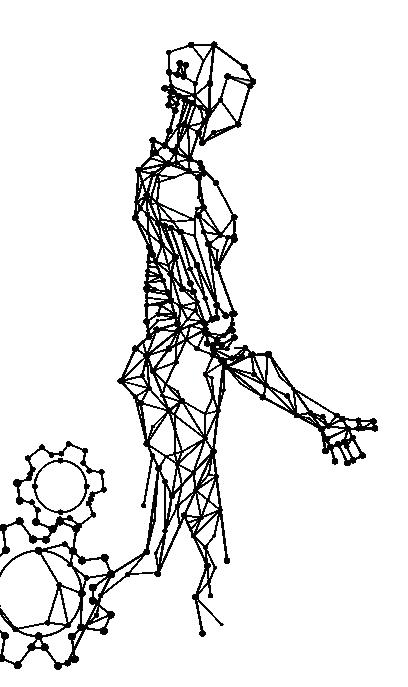

Think of the skills acquired throughout the history of humanity. We used to make fire from scratch but in modern life do we need to do that now? Few people need to know how to preserve our food to last through the winter now, and with smart phones we don’t need to remember phone numbers anymore.
When used appropriately these tools free us up to become much better at what we do, like the adoption of calculators freed us up to pursue more advanced math. But when something goes wrong with these tools, people may not know what to do without them. We need to understand the tradeoffs we are making — what we’ve gained and what we’ve given up.
The technology is kind of faking being intelligent. It analyzes vast amounts of data and puts strings of text together in a way that simulates intelligence. What is so impressive — and potentially frightening about ChatGPT — is that it generates large quantities of legible, well-written and unique text quickly.
Basically, this tool chooses the right word to put next in each sentence, sort of like autocomplete gone wild, but it doesn’t understand what it’s doing. It’s not actually intelligent, so it often produces text that is nonsense. In that sense, it reminds me of early computer translation tools where if you asked for the French translation of the word “president” it would give you the name of the actual president of France instead.
ChatGPT is very sophisticated in the way it puts text together, so it can really play on our emotions. It’s important to remember it’s programmed to do that as a simulation of intelligence. I would tell anyone worried about emotional responses from ChatGPT that this technology is not sentient. It’s not alive. We haven’t got to that point yet. I don’t know how close we are to that, but I am confident it’s a long way off.

Florida State’s academic honesty policies cover this; you aren’t allowed to have someone else write your papers for you. Full stop. And that includes ChatGPT.
But there are gray areas. We allow students to use tools like spellcheckers and grammar checkers. So why not allow students to use AI tools like ChatGPT? Where do we draw the line between programs like Grammarly and ChatGPT?

Is there anything wrong with students using an AI editor or proofreader, for example? But at what point does your paper stop being your paper? We need to work with our students to help them understand the appropriate use of these tools.
It’s going to take time to adapt, but we shouldn’t hide from these technologies. We need to embrace them and figure out the right way to use them in the classroom. This will mean changing the way we think about education at the university level.
The bottom line for me is this: if our test questions or essay prompts can be answered satisfactorily by an AI, then we need to ask better questions. Think about assignments like asking our students to read an article, and then write a short summary of it. Well, ChatGPT is really good at writing 200word summaries of anything you want. If a computer can do this as well as a human, why are we asking our students to do it? Again, it’s about trade-offs — what have we lost, and what have we gained?
We need to look at what ChatGPT can and cannot do and adapt our assignments to reflect that understanding and help our students get to the next level. ChatGPT is really good at writing at a cursory level, but it can’t produce the in-depth writing a human can, at least not in a way that makes any sense. So let’s use AI as a starting point and then work with our students to dissect the AI-written text, discuss what it got right and what it got wrong, and really dig into the topic.
After all, that’s what we want our students to be able to do when they graduate — to use the tools and technologies available to them to achieve a higher level of thinking and a higher level of writing — that should be the goal of a university education.

As an R1 institution and a national leader in research and innovation, Florida State University continues to pursue groundbreaking research and interdisciplinary collaboration that will save lives, improve society and help drive human advancement. With more than 50 prominent research centers and institutes calling our campuses home, FSU continues to be one of the top idea-incubators in the nation.


Florida State University faculty are often tapped by media outlets for their perspective and expertise.
Here is a sampling of recent stories that highlight the innovation and research happening at FSU.
The Carnegie Foundation for the Advancement of Higher Education has classified approximately 146 U.S. institutions as having R1 status. In other words, R1 institutions are recognized as the best research universities in the country — and Florida State University is one of them. Currently, only 3.7% of the degree-granting postsecondary institutions in the U.S. have the Carnegie R1 Classification.
7
TOTAL NATIONAL ACADEMY MEMBERS ENGINEERING, MEDICINE AND SCIENCES

In an article about social participation pre and post-pandemic, professor Angelina Sutin from the College of Medicine discusses the study she led through Understanding America, an “internet panel” of approximately 10,000 respondents representing the entire United States. In it she found that by last year, young and middle-aged people in particular had become much less extroverted, open, agreeable and conscientious than they were pre-pandemic. “Digital connections may have shielded people from those changes in the earliest days of the pandemic,” Sutin said. “Two years in, their personalities had changed about as much as they typically would over a decade.”
READ MORE gonol.es/ZoomFriends
114 PATENTS AWARDED TO FSU INVENTORS for a three-year period by the United States Patent and Trademark Office
In an article discussing FSU’s groundbreaking research on cancer biomarkers, Hedi Mattoussi, a professor in the FSU Department of Chemistry and Biochemistry said, “Our goal in this research was to build a biosensor that would light up in the presence of cancer markers, offering another tool for the ongoing problem of detecting this disease. Cancer diagnosis is still a huge problem and early detection has been a limiting factor. Better tools for detecting cancer mean more effective treatment for patients.”
READ MORE gonol.es/Biomarkers
INCLUDES FEDERAL, STATE AND OTHER FUNDING SOURCES.
$400 MILLION
50% of STEM majors are women

44% of STEM majors are people of color
28% of degree-seeking students at FSU are STEM majors
25% of FSU undergraduate students currently conduct out-of-class research with research mentors. Hundreds of FSU undergraduates also coauthor research publications and presentations with faculty members and graduate students every year.
in 2022–2023. FSU is one of the nation’s top research institutions for producing Fulbright U.S. Scholars and students.
FSU holds the HIGHEST AMOUNT of National Science Foundation research and development expenditures in the state of Florida.
* Deceased
In this use, people of color are defined as students who identify as Hispanic/ Latino, Black/African American, Native American/American Indian, Hawaiian/ Pacific Islander, Asian and those of two or more races
Sources: Florida State University's Office of Institutional Research FY22 reports, Office of Research (CY23), “Highly Cited Researcher” list from Clarivate.
FSU has 5 faculty members or associated researchers listed on the “Highly Cited Researchers” list for 2022. This prestigious list identifies scientists and social scientists who have demonstrated significant and broad influence in their publication of multiple highly cited papers over the last decade.
DR. MICHAEL W. DAVIDSON*
Former Director of the Optical Microscopy Division of the National High Magnetic Field Laboratory 1994–2015

DR. THOMAS E. JOINER Director of the FSU Psychology Clinic, Robert O. Lawton Distinguished Professor of Psychology 1997–Present
DR. ALAN R. LEMMON
Director of Bioinformatics at FSU’s Center for Anchored Phylogenomics, Assistant Professor in the Department of Scientific Computing 2008–Present

DR. EMILY C. MORIARTY LEMMON
Associate Professor in the Department of Biological Science 2009–Present
DR. JESSICA D. RIBEIRO
Associate Professor in the Department of Psychology 2016–Present
In an article on Americans living in vans, buses and cars to consume less energy, professor Mathew Hauer, who studies demography and climate change at Florida State University, commented that people usually migrate for a combination of reasons, including better job prospects or to be closer to family, but climate disruptions are increasingly the final straw. “By the end of the century,” he says, “climate migration in the US will be on par with the Great Migration,” in which roughly 6 million Black Americans moved from the rural South to the North and Midwest at the beginning of the last century.
READ MORE gonol.es/Vanlife
Health Law professor Mason Marks provided commentary to the Daily Beast on the release of ChatGPT, an artificial intelligence chatbot developed by OpenAI and released in November 2022. “The release of OpenAI’s ChatGPT and its widespread popularity has spurred renewed interest in the feasibility and risks of incorporating AI-generated advice into medical practice.” Marks has also co-authored an article published in “JAMA” unpacking the potential uses—and risks—of incorporating AI-powered chatbots into clinical care or using them as a substitute for providers entirely.
READ MORE gonol.es/ChatGPT

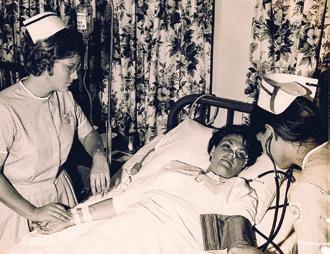






Since 1950, the FSU College of Nursing has maintained a well-known reputation of excellence and for preparing students to face the pressing healthcare challenges in their communities and the world. Nurses have long served as foundational innovators for healthcare, ranking the most trusted profession by the U.S. Public for the last 20 years.*



At the College of Nursing, our mission is to lead healthcare reform, improve health outcomes and generate knowledge that improves nurse education, leadership and practice. I am proud to say that FSU Nursing continues to build on the legacy of the Nole Nurses who came before us and pursue innovation and excellence at every level. Our community is over 8,000 strong and continues to grow, as we know our communities need us to prepare the next generation of nurse leaders.
With your support, we have accomplished so much in the last two years since I’ve become dean. We’ve risen significantly in our rankings on the U.S. News and World Report in both undergraduate and graduate programs and more than tripled our undergraduate enrollment to address the nursing shortage locally and beyond. We’ve risen from ranking 43 to 8 nationally and are the number one receiver in Florida for National Institutes of Health (NIH) research funding.
In addition, we’ve launched two new tracks within our Doctor of Nursing Practice (DNP) program and a brand-new online Ph.D. program that begins this fall. This is truly a transformational time for our program as we boldly rise to take on necessary challenges and meet the needs of our society.
None of this would be possible without the continued support of our alumni, parents and friends. Your commitment and love for our profession, whether through donations, encouragement or advocacy, is never taken for granted.
We are so grateful for your support as we continue rising together to shape the nursing and healthcare landscape. Go Noles!
Best,
 Jing Wang, Ph.D., MPH, RN, FAAN Dean and Professor Florida State University College of Nursing
Jing Wang, Ph.D., MPH, RN, FAAN Dean and Professor Florida State University College of Nursing
 *Gallup Honesty and Ethics Poll (2022)
*Gallup Honesty and Ethics Poll (2022)

In the NCAA Championship, the Florida State Beach Volleyball team won their quarterfinal match against LSU but came up short in the semifinal against UCLA, thus ending the Noles’ hope for another Championship appearance. The team has been ranked in the top five of the AVCA/Dig Rankings in six of the last seven seasons and played in the national championship finals four times since 2014.

Seminoles finished as 2023 National Runners-up in the 2023 Women’s College World Series. This is the second time they’ve come home as national runners-up in program history and their third WCWS Championship Series appearance in the past five seasons. The team also doubled as ACC Regular Season and Tournament Champions for the first time since 2018.

Florida State closed out the track and field season with the men’s team finishing tied for 15th in the country and the women’s team at 37th.

The Florida State Men’s Golf Team, which tied for third at the 2023 NCAA Men’s Golf Championships, established a program record with four members named Division I PING All-Americans. The program also sent four Seminoles to the Arnold Palmer Cup this summer. FSU was the only team in the country with four players in the annual competition between collegiate golfers representing the United States against an International Team.

Florida State finished in a tie for fifth place in the NCAA Quarterfinals for the second consecutive year. The Seminoles advanced to match play for the second straight year and for the second time in school history. Florida State is one of only four teams in the nation that has played in each of the last seven NCAA Championship Finals.
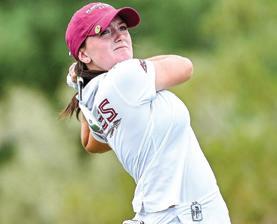
The Florida State men’s tennis team concluded the season ranked 20th in the final Intercollegiate Tennis Association Rankings. They earned their 24th bid to the NCAA Tournament and the 18th NCAA Tournament victory in program history with a 4-0 sweep of Baylor. In the ACC Tournament, Florida State defeated No. 55, Clemson, upset No. 14 North Carolina en route to an ACC Semifinal appearance and earned the program’s 28th and 29th ACC Tournament wins.

The Florida State women’s tennis team ended their season ranked 24th in the final Intercollegiate Tennis Association national rankings. Florida State also advanced to the ACC Quarterfinal for the 26th time, was selected to the NCAA Tournament for a 24th time and made it to the second round of the NCAA Tournament for the sixth consecutive championship.







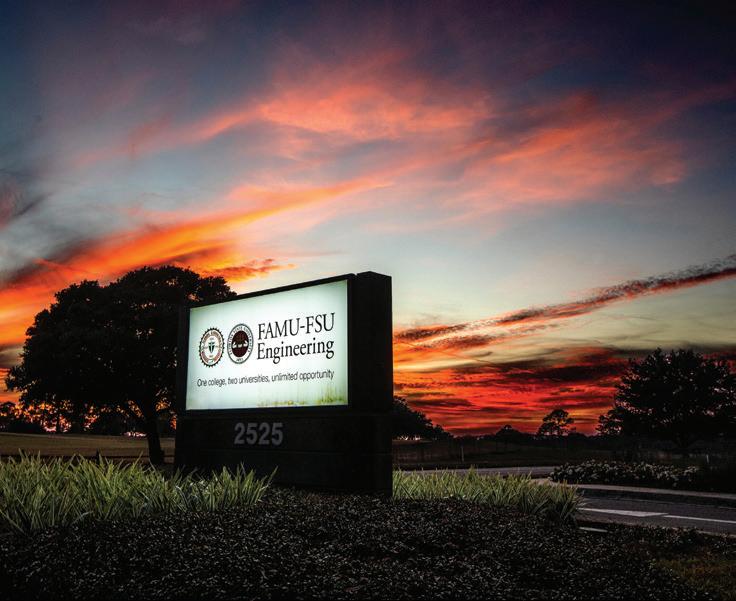



directors of the newly formed school, and that August, the institution welcomed its first incoming class, a mix of 35 students from both universities. In 1985, the recently renamed FAMU-FSU College of Engineering held its first graduation and awarded 13 degrees.


Initially, classes were held on both campuses, which presented challenges for students. Tom Ballenger (B.S. ’85), an FSU graduate of the first engineering class, said, “At times, we felt like homeless students because we were always changing class locations. We had classes in the math building, the physics building and even the nursing building. Sometimes, I had morning classes at FAMU and afternoon classes at FSU.”

Another challenge the new college faced by reporting to two universities was that degree courses were initially split between the two campuses by major. For example, most mechanical engineering courses were held at FSU, while electrical and civil engineering courses were typically held at FAMU. This led to a misconception among students that certain degrees were offered by only one of the two universities and were not a joint opportunity for students of both FSU and FAMU.
 ↑ Above, Fred G. Buser (B.S. ’67, M.S. ’69), David V. Kerns Jr. (B.S. ’67, M.S. ’68, Ph.D. ’71), Shaukat Mahmood (Ph.D. ’71) and Jamil Ahmad make up FSU’s first class of doctorate students in Engineering Science. ← At the left, students study for finals.
↑ Above, Fred G. Buser (B.S. ’67, M.S. ’69), David V. Kerns Jr. (B.S. ’67, M.S. ’68, Ph.D. ’71), Shaukat Mahmood (Ph.D. ’71) and Jamil Ahmad make up FSU’s first class of doctorate students in Engineering Science. ← At the left, students study for finals.
Professor Emeritus George Buzyna said, “The program would not be cohesive until the new building was built.” That would occur several years later when the initial building, known today as “A Building” (formally the Morgan Building), opened in 1988 in Innovation Park. The next phase of the construction, B Building and its connector, opened in 1998.
In 2003, the college continued its growth outside Innovation Park by opening the Challenger Learning Center, its K–12 STEM outreach facility. Located in downtown Tallahassee, the facility includes an IMAX® Theater and planetarium. The Materials Research Building opened in 2008 and currently houses the High-Performance Materials Institute and other research centers.
The early 2000s was a period of academic growth and recognition for the college. In 2000, the FAMU-FSU College of Engineering became a top producer of African-American Bachelor of Science engineers with 167 graduates. Four years later, the college earned a top 10 national ranking as a producer of AfricanAmerican engineers. That same year, every engineering program at the college received ABET accreditation, which signifies the high-quality standards of a college’s natural science and engineering program.
The “noble experiment,” as many called it, has reached great success today, but it has not been without challenges and skepticism along the way. Throughout its history, discussions about splitting the school have challenged the administration.


However, in 2015, a study funded by the state legislature reaffirmed the commitment to the joint college model and its potential.

This feasibility study also resulted in the formation of the college’s Joint Management Council, which the Board of Governors approved in 2018. The council reflects a new budgeting structure and integration of previously separate student activities.
Last year was an instrumental year for the college. In 2022, the college celebrated its 40th anniversary, appointed a new dean, and received significant additional funding from the Legislature to propel the college forward in student success, faculty retention, research innovation and state-of-the-art facilities.
For more on the college’s history, view the timeline created for its 40th anniversary at


While the FAMU-FSU College of Engineering is young compared to other colleges at FSU and around the nation, its alumni have already made waves in their industries. They are well-known and often leaders in their field.

Dean De explains engineering as a pathway to leadership. “Engineers can become whatever they want to be. They can become businesspeople, lawyers, doctors and surgeons. Engineers actually reach out and touch pretty much every possible field you can think of.”
For alumna Mahogany Brazle Campbell (B.S. ’02), the college provided her with the leadership experience she uses as Director of Business Management at NextEra Energy, Inc. As a student, Campbell was involved in various organizations and was elected president of Alpha Kappa Alpha Sorority, Inc. “I found my voice at the College of Engineering and FSU by leading organizations.”
The college also helped Campbell establish her drive and resilience
while preparing her for the lack of diversity she’s experienced in her field. “There were very few women majoring in electrical engineering, and when I got into the workforce, very few at my job,” she said.
While the FAMU-FSU College of Engineering has 29% female students compared to the national average of 24.6%, the college and alumni like Campbell are committed to further increasing this percentage.

Campbell gives back to the organizations that she credits with her success by serving on the dean’s diversity counsel and as a board member on the FSU Alumni Association National Board of Directors. “FSU and the FAMU-FSU College of Engineering have made me who I am today as a professional.”
Michelle Rambo-Roddenberry, Ph.D. (B.S. ’92, M.S. ’94) is also no stranger to the FAMU-FSU College of Engineering. She is a two-time FSU alumna in civil engineering and serves as associate dean for academic and student affairs at the college.
↑ Students at the college engage in a wide variety of research, such as infrared technology, mechanical engineering and cryogenics.


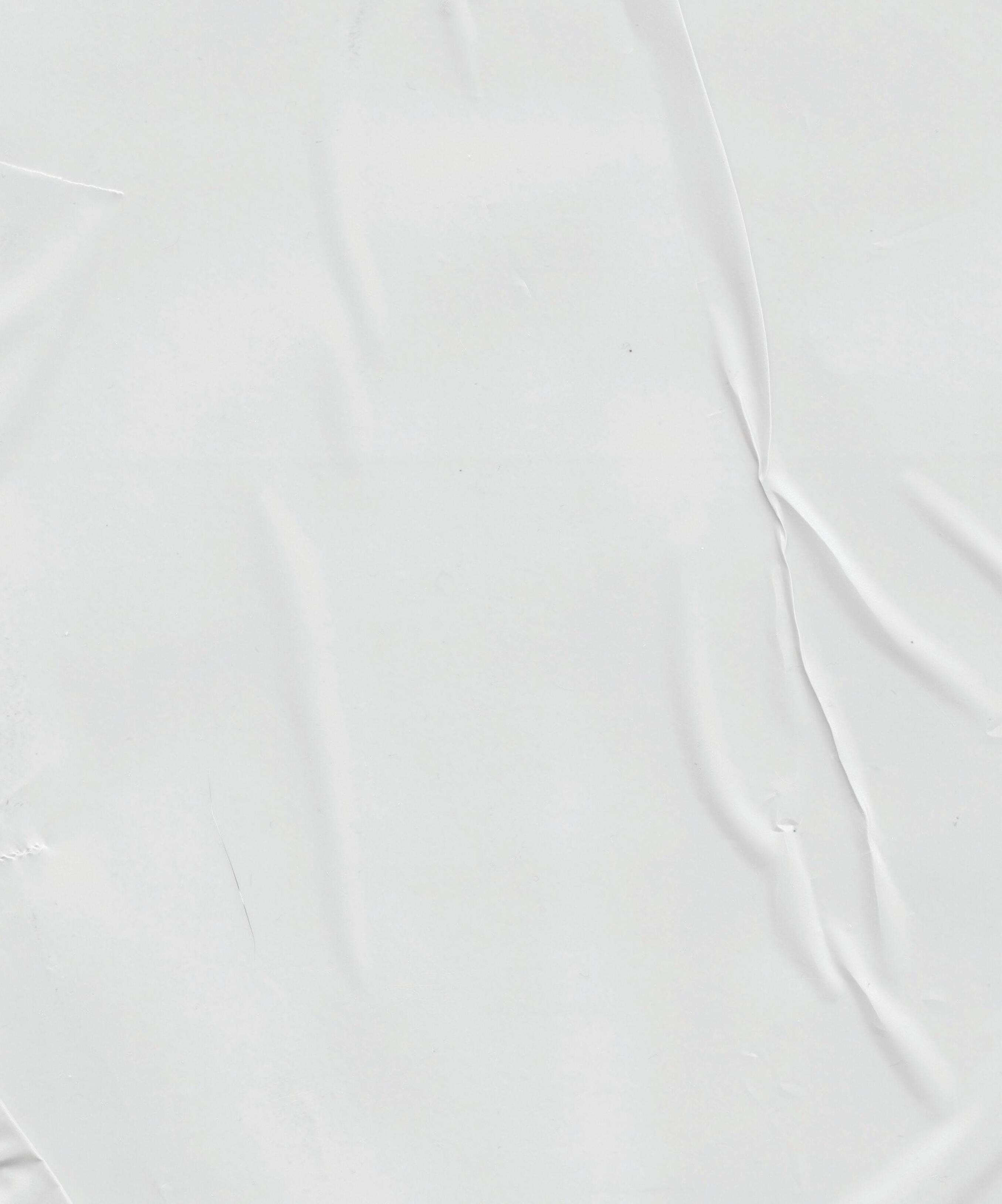






Dean Suvranu De began his journey at the FAMU-FSU College of Engineering in July 2022. In this role, he leads more than 300 faculty and staff of the joint institution, along with 2,800 graduate and undergraduate students. De, who received his mechanical engineering bachelor’s and master’s degrees in India and doctorate from MIT, is an esteemed scholar and innovator in the field.
My motivation to pursue science and engineering stems from a desire to make a meaningful difference in the world by improving patient safety. I’m interested in developing practical solutions to solve clinical problems, like using virtual reality technologies to train surgeons for robotic-assisted procedures. This is similar to how flight simulators are used for training aviation pilots.
My interests are primarily focused on the intersection of computational science and engineering, haptics, virtual reality, AI and machine learning and noninvasive brain imaging. My primary goal is to develop virtual surgery tools and technologies that incorporate these areas of expertise. Combining haptic feedback and virtual reality can provide a more immersive and realistic experience for surgical trainees, potentially leading to better surgical skills and fewer errors. Using noninvasive brain imaging, I have developed novel ways to gauge surgical competence and identify areas for improvement in surgical training.
Being able to collaborate effectively across disciplines, particularly when it came to communicating with surgeons. While developing the technology itself required expertise from various fields, it was crucial to work closely with surgeons to ensure that the technology was practical and useful in real-world surgical scenarios. I had to build strong relationships with some of the premier teaching hospitals in the country, where I could work closely with surgeons and really understand their needs and perspectives.
If I had to pick one project as the most interesting and brings together many of the technologies we have developed in the past, it would be the development of the Virtual Operating Room Team Experience (VORTeX) simulation
system. This project is particularly fascinating because it allowed us to address a critical issue in surgical training: the need for effective team communication and collaboration skills in addition to technical competence. Through VORTeX, a multidisciplinary team of surgeons, nurses and anesthesiologists could learn and practice these critical skills together in a virtual operating room and patient, despite being geographically dispersed.
5
1 2 3 6 7 4
The unique nature of the college drew me in. It is the only joint college of engineering that sits at the nexus of the top public HBCU in the country, Florida A&M University, and a top 20 R1 research university, Florida State University. This collaboration creates a dynamic and diverse community that is unparalleled in its ability to attract the best students and advance engineering research and education. I was particularly drawn to the college’s commitment to innovation and its emphasis on collaborative, interdisciplinary research that can address some of society’s most pressing challenges.
I usually start with a workout routine. I find it helps me to clear my mind and set a positive tone for the day ahead. I like to review my emails and my calendar to stay up to date on any important messages or tasks that need my attention. Then, I grab a cup of coffee and head to the office. During my commute, I like to mentally prepare for the day ahead, reviewing my schedule and prioritizing my tasks. Once I arrive at the office, I usually have a quick catch-up with my team to discuss any updates or changes, and then I dive into my schedule for the day. This often includes meetings with faculty, staff, and students, as well as reviewing reports and budgets.
My late father, who was a professor of English language and literature, shared a quote from Hamlet that has stuck with me ever since: “To thine own self be true, and it must follow, as the night the day, thou canst not then be false to any man.” This line has been a guiding principle in my life, reminding me to stay true to my values and not compromise my beliefs to fit in with others. This has given me the strength to make choices
as a leader that align with my values, even when it may not be the most popular or easy decision.
8 9 10
Hiring and mentoring some exceptional junior faculty in my career, who are now leading their fields and winning awards. I’m also proud of the excellent staff I have hired to support the faculty and students. They have been instrumental in helping us achieve our goals and maintain our high standards of academic excellence. As the new dean of the FAMU-FSU College of Engineering, I am committed to continuing this tradition of hiring and mentoring exceptional talent. My goal is to create an environment that fosters growth, innovation and collaboration.
The Biomedical Engineering Ph.D. program offered by our college is the only such program among all HBCUs in the country. This program focuses on developing innovative technologies and solutions to address healthcare challenges, and it provides students with opportunities to work with state-of-the-art equipment and facilities. Graduates of the program are prepared for careers in academia, industry and government, where they can apply their knowledge and skills to improve human health and well-being.
Our unique partnership model allows us to leverage the strengths of both institutions and provide students with a world-class engineering education. We have excellent faculty and staff dedicated to advancing the engineering field through cutting-edge research, innovative experiential teaching methods, and a commitment to student success. Engineering faculty members are responsible for generating more than half of the patents at FSU. To build upon these successes, I will work to enhance our research partnerships with industry and government agencies and expand our entrepreneurial ecosystem to help our faculty and students turn their research into real-world solutions.
LEARN MORE eng.famu.fsu.edu
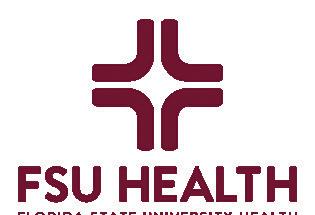
 By Emily Clemons MacMillan (B.A. ’17)
By Emily Clemons MacMillan (B.A. ’17)
Wilton Simpson served as a state senator and leader of the Florida Senate, he met with Richard McCullough, the then-new president of Florida State University.
Simpson urged McCullough to think big. They were on the same page.
McCullough was eager for the university to take on big projects and thought the university could make a huge
impact in the Panhandle by providing more accessible health care.
Thus, a bigger, bolder plan to create a health care ecosystem for North Florida began to take shape. The university’s College of Medicine had existing partnerships with Tallahassee Memorial HealthCare, The St. Joe Company and other entities like the Mayo Clinic in Florida that McCullough wished to expand upon so that it encompassed the entire university.
The plan would merge the clinical care of existing partners with the research might of the university community at large.
“FSU Health will reshape patient care, education and research throughout Florida,” McCullough said earlier this year. “The Florida Panhandle is booming and the
possibilities — and needs — in our region have never been greater. We are at a very exciting time as we lay the foundation for this monumental project.”
Simpson became FSU Health’s champion and helped secure $125 million for the university to build an academic health center on the TMH
campus in Tallahassee. Simpson is looking to FSU Health to solve many problems —access to health care, nursing and physician shortages, increasing care quality, etc.
“FSU Health will eliminate the need for people in the Panhandle to travel across the state, to Mobile or Atlanta, just to get quality health care,” Simpson said. “This facility and the partnership between the university and the health care systems will solve that need. I want it to be the health care leader in this area because I believe when you have excellence in health care, no matter where it is, it is transformative.”
But it’s not a small task.
According to FSU Provost and Executive Vice President for Academic Affairs Jim Clark, FSU Health is “the most ambitious intellectual project the university has ever taken on.”
FSU Health isn’t the first time FSU has tackled a big project.
There were plenty of naysayers when the FSU College of Medicine welcomed its first class in 2001. It was the first new medical school to open in the United States in more than 20 years, but some questioned the need.

FSU disagreed.
The university saw an urgent need for providers who focused on preventative, community-based care in outpatient settings rather than hospitals. So, with the backing of the Florida Legislature, Florida State blazed ahead, prioritizing recruiting and admitting nontraditional students who would make exceptional doctors committed to their communities.
The structure of the school was an innovative take on health education. In traditional medical schools, thirdand fourth-year students are assigned to a hospital or care facility for their clinical training and then placed on a hierarchical residency team, in which they are at the very bottom. The student will then receive training from a resident, who is just one level above them and much less experienced than attending physicians or other more senior team members, who, often, the medical student may not be allowed to even speak to.
In FSU’s model, however, students are assigned to an individual attending physician at one of Florida State’s six regional medical campuses operating in underserved communities across the state. This model gives students more hands-on experience and access to senior physicians and helps ensure health equity for Floridians regardless of where they live.


“When we started this model, we focused on the areas that we really felt the state needed, caring for patients in underserved communities,” said Dr. Alma Littles, interim dean of the College of Medicine. “We recruited students from those populations and ensured we developed the regional campuses with that same mission. Today, the university has initiatives like FSU Health, which is a broad look at transforming health care in North Florida. It’s an exciting time to be a part of Florida State University.”
It’s the combination of research and clinical care that is what will make FSU Health special, McCullough said.
In addition to partnering on the academic health center, FSU and TMH are also working with The St. Joe Company on a health care campus in Panama City Beach, featuring an 80,000-square-foot medical office building slated to open in 2024 and a 100-bed hospital to be completed in 2027. The university also has partnerships with Mayo Clinic in Jacksonville and HCA Healthcare.
As these partnerships have been developed, university officials also made some big hires and invested in the research infrastructure to boost its health research portfolio, putting a focus on innovations that can quickly go from the lab into a health care setting.
• Professors Lisa Hightow-Weidman and Kathryn Muessig joined Florida State in Fall 2022 from University of North Carolina at Chapel Hill and brought in more than $72 million in their first year at FSU to develop interventions related to HIV.
• Associate Professor Michael Kofler received $9 million in funding to expand the age range for his “gamified” ADHD treatments. Developed for children ages 8 to 13, Kofler plans to design the program for children as young as four, revolutionizing the treatment options available for pediatric ADHD.
• The Anxiety and Behavioral Health Clinic, led by Distinguished Research Professor Brad Schmidt, is currently conducting studies on combatting loneliness and anxiety in older adults, interventions to prevent suicide in the military and reducing symptoms of PTSD, among many other issues. Schmidt also received a $3.7 million grant from the National Institute on Aging to study anxiety intervention techniques in adults with cognitive impairments like Alzheimer’s and dementia.
Part of the reason Hightow-Weidman and Muessig left UNC for FSU was the university’s vision. They were inspired by the university’s plans to build FSU Health and expand the health-related academic programs.
The dynamic research team brought a long record of funding from the National Institutes of Health and a passion for digital health. Through their Institute of Digital Health Innovation, they develop ways to use technologies and tools to help solve needs of patients and providers and optimize health and wellness.
“If you think of telehealth like your doctor’s visit, then digital health tools support everything between those visits,” Muessig said. “We’ve worked on supporting medication adherence and other things that require good habits. For example, we don’t want you to smoke every day, but we do want you to take your medicine every day.”
Hightow-Weidman and Muessig have previously focused on digital health interventions for young men of color living with HIV, encouraging them to take antiretroviral therapy (ART) or providing them with health and wellness information via specially developed apps.
This focus will continue at Florida State, as they bring with them $72.7 million in funding, primarily from the NIH, to run theAdolescent Medicine Trials
Network (ATN) for HIV Interventions. The ATN is the only HIV network exclusively focused on adolescents and young adults in the United States and focuses on increasing awareness of and access to care for HIV in youth ages 12 to 24.
The team’s work will include opportunities for collaboration between researchers and faculty across disciplines and educational and training opportunities for students. Throughout their first year, HightowWeidman and Muessig said they have been assessing what opportunities they can create for students and have an open call for any student interested in working with the institute. Some they have considered include a variety of course offerings, particularly on mobile health, as well as being involved in the College of Nursing’s new doctoral program and supporting postdoctoral research scholars.
“With FSU Health, bringing translational research into practice and having access to patients using the interventions we design will be amazing,” HightowWeidman said. “We are excited — there are lots of opportunities to engage students in our work here at Florida State.”
Like Hightow-Weidman and Muessig, Professor of Integrative Physiology Michael Ormsbee is also interested in how to use digital tools to improve human health but with a slightly different focus.
Today, the university has initiatives like FSU Health, which is a broad look at transforming health care in North Florida. It’s an exciting time to be a part of Florida State University.
DR. ALMA LITTLES, INTERIM DEAN OF THE COLLEGE OF MEDICINE
As Director of the FSU Institute of Sports Sciences and Medicine, he is focused on optimizing human performance. Launched in 2010, ISSM is a collaboration between the College of Health and Human Sciences, the FSU Department of Athletics, the College of Medicine, Nike and Tallahassee Orthopedic Clinic.

Recently, ISSM researchers and the FSU women’s soccer team joined forces to study the data that could be gathered from health and fitness tracking armbands on sleep, activity and recovery as a way to study how pre-sleep nutrition influenced the team. They took it a step further in 2021, partnering with researchers and athletes at the University of North Carolina at Chapel Hill, the University of Nebraska and South Dakota State University to study more than 400 female student-athletes in many sports, including soccer, volleyball and cross country.
Ormsbee said the partnership with Seminole Athletics is unique to the institute, as academic researchers at most universities have a hard time accessing student-athletes. However, at FSU, the ISSM is able to work with almost all of FSU’s student-athletes.

“We have inroads with almost everyone in Athletics, in big part due to Elisa Angeles, our head of conditioning for Olympic sports,” Ormsbee said. “She opened a huge bridge to Athletics, allowing us to do some really great work. Ours is probably one of the only genuine athletics-academic relationships among U.S. universities.”
And though his center is focused on sports science, Ormsbee’s overarching interest is how this work can cross over to help non-athletes. The institute has teamed with local hospitals and clinicians to explore outcomes with diabetes, obesity, nutrition and Parkinson’s Disease.
“There is a stronger crossover between sports medicine and clinical than people think,” Ormsbee said. “For example, we are working on some things now that will help heat tolerance in athletes, but we’re also thinking about firefighters and others who work in hot environments like farmers.”
Working with the community is part of ISSM’s mission. In 2023, the institute re-opened its outreach arm, offering payfor-service testing on VO2 max tests for aerobic fitness, lipid and glucose profiles, bod pod scans for body fat percentage and more.
Ormbsee said there is a strong interest from members of the community in learning more about their health and athletic performance and is asked almost every day about coming in for VO2 max tests and other services. For this reason, he is passionate about expanding the institute and plans to take a sabbatical in 2024 to focus more on this work.
“It is important for us to serve the community, and I hope the institute will continue to take off,” he said. “I would love for alumni and our community to consider this intersection and support our work.”
As the university continues to build its research infrastructure, university officials continue to meet to build the infrastructure of FSU Health.


In March, FSU and TMH announced the formation of a community advisory group called the Transformation Committee to guide the two institutions as they move forward on the FSU Health- Academic Health Center and other projects throughout the Panhandle.
“Universities don’t get opportunities like this every day,” McCullough told a crowd at an event at TMH in March. “We want to deliver unparalleled clinical care with our partners at TMH, conduct impactful research and provide outstanding educational programs. This combination of clinical care, research that informs treatment and medical education is what makes an academic health center special.”
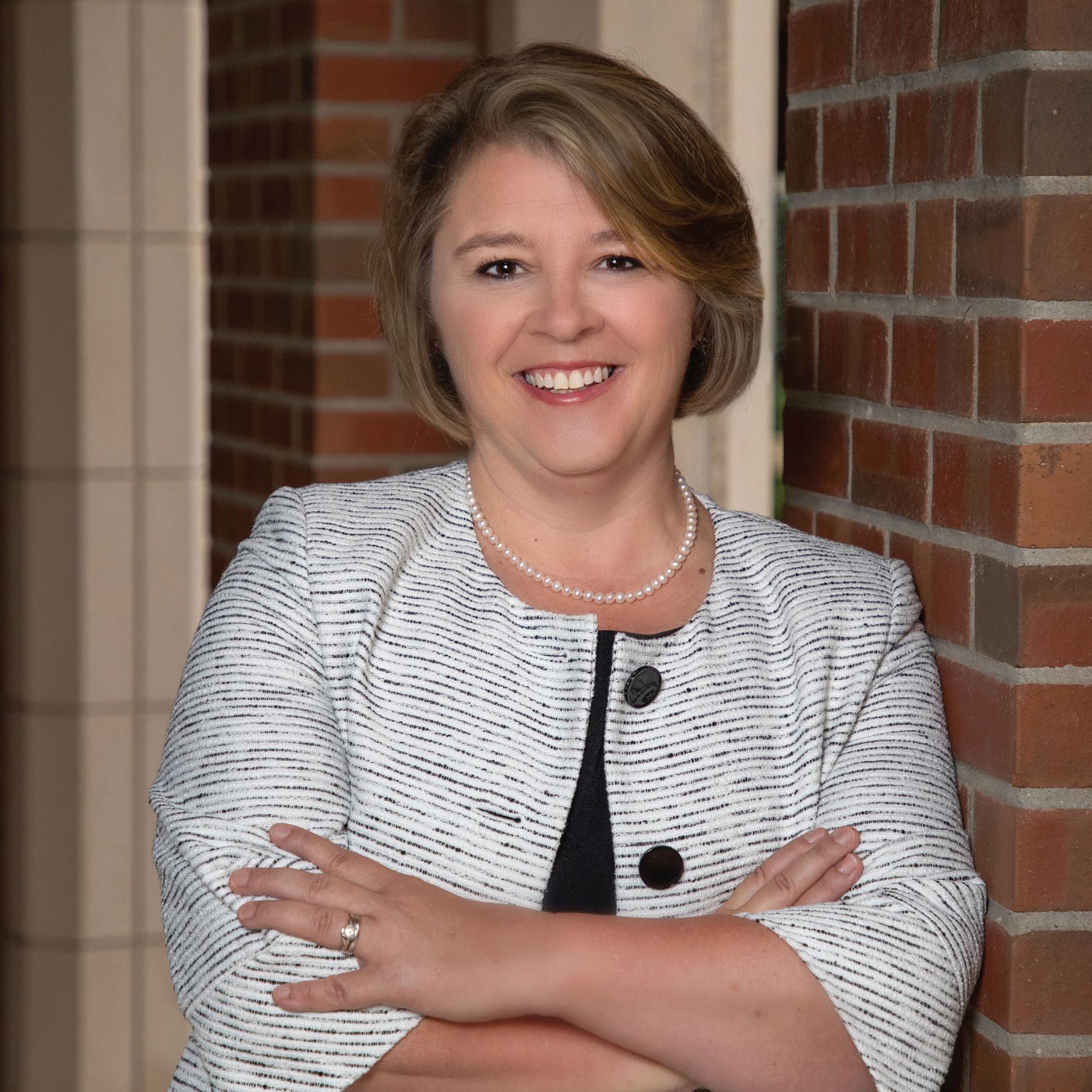

This early desire came from a family friend. Patterson’s father went to high school with Dr. Lola Stamm, an associate professor at the University of North Carolina at Chapel Hill, and there was never a time he didn’t speak of her with great admiration. “He would say ‘[Dr. Stamm] is so smart,” Patterson remembers. “She can do whatever she wants in the world.” In turn, he showed Patterson that she could do whatever she wanted, too. A first-generation college student, Patterson went on to earn her bachelor’s, master’s and doctoral degrees in microbiology.
“It is so important to have role models and inspirational leaders, but the reality is that mine and my aspirational mentor’s careers have been very different,” Patterson said. “My goal is to build programs that go well beyond me. When I think about universities and their role in communities, public universities serve the state’s constituents. It’s all about giving back.”
She implemented this philosophy at the University of Tennessee Research Foundation, which helps researchers commercialize their work, benefit society and generate profit. She also launched the “Innovation Is Everywhere” campaign, which helped UT double its disclosures or ideas and triple its licenses in just a few years.
“I was able to bring together people from disparate efforts to develop large-scale proposals for grand-scale problems that require interdisciplinary cooperation,” she explained. “The scope of bringing that together and telling a creative vision that someone is willing to put their dollars behind was huge.”

Patterson also led several statewide initiatives in Tennessee, including securing a $24 million National Science Foundation grant for research infrastructure, leading a $62.5 million Volunteer State Solar Initiative and securing a $38 million U.S. Department of Energy award to launch the new UT-Oak Ridge Innovation Institute.
As vice president for research, Patterson leads FSU’s Division of Research, controlling more than $400 million
annually in research expenditures. She also works closely with President Richard McCullough and Provost Jim Clark to promote the university’s academic mission while specifically building research and creative activities.
Her philosophy centers on fostering collaboration and aligning everyone’s strengths to work toward a shared vision. Part of that vision includes pursuing President McCullough’s goal of earning Florida State an invitation to the American Association of Universities, which comprises 65 of the country’s leading research universities.
At the heart of her work is a desire to help the university give back to the community. Patterson believes there is an opportunity for FSU to be even more engaged and have a more profound impact in the Florida Panhandle.
“I look at my job as helping others to reduce barriers [and] making it easier to do research that has impact,” Patterson said. “FSU is a Top 20, Research 1 university and has done tremendously well in terms of student research. We have a strong research foundation, but I want to work with community leaders on a unified vision of the future of Tallahassee and North Florida. That will enable us to recruit top researchers and increase their opportunities.”
FSU is well on its way. Since 2017, funding for research at Florida State has seen an increase of over $20 million, and in 2021 FSU oversaw 50 patents granted. With the construction and land designation of two new health care campuses in Panama City Beach and Tallahassee underway, FSU can potentially transform health care delivery, education and biomedical research throughout Florida, surrounding states and the nation.
“45,000 of the greatest minds come to FSU every year to become educated," said Patterson. “We have an opportunity to grow research and provide opportunities for them to stay and pay it forward in this region. That’s a 20-to-30-year plan, but you have to start somewhere.”
Ask any small child what they want to be when they grow up, and you’ll undoubtedly get a classic response: an astronaut, athlete, doctor, dancer or firefighter. When 8-year-old Stacey Patterson got that question, she said she wanted to get a doctorate in microbiology.
Florida State University has always been at the forefront of women’s education. But when it comes to STEM—science, technology, engineering and math—the university takes it a step further with a warm community of support that has transcended the last two decades.
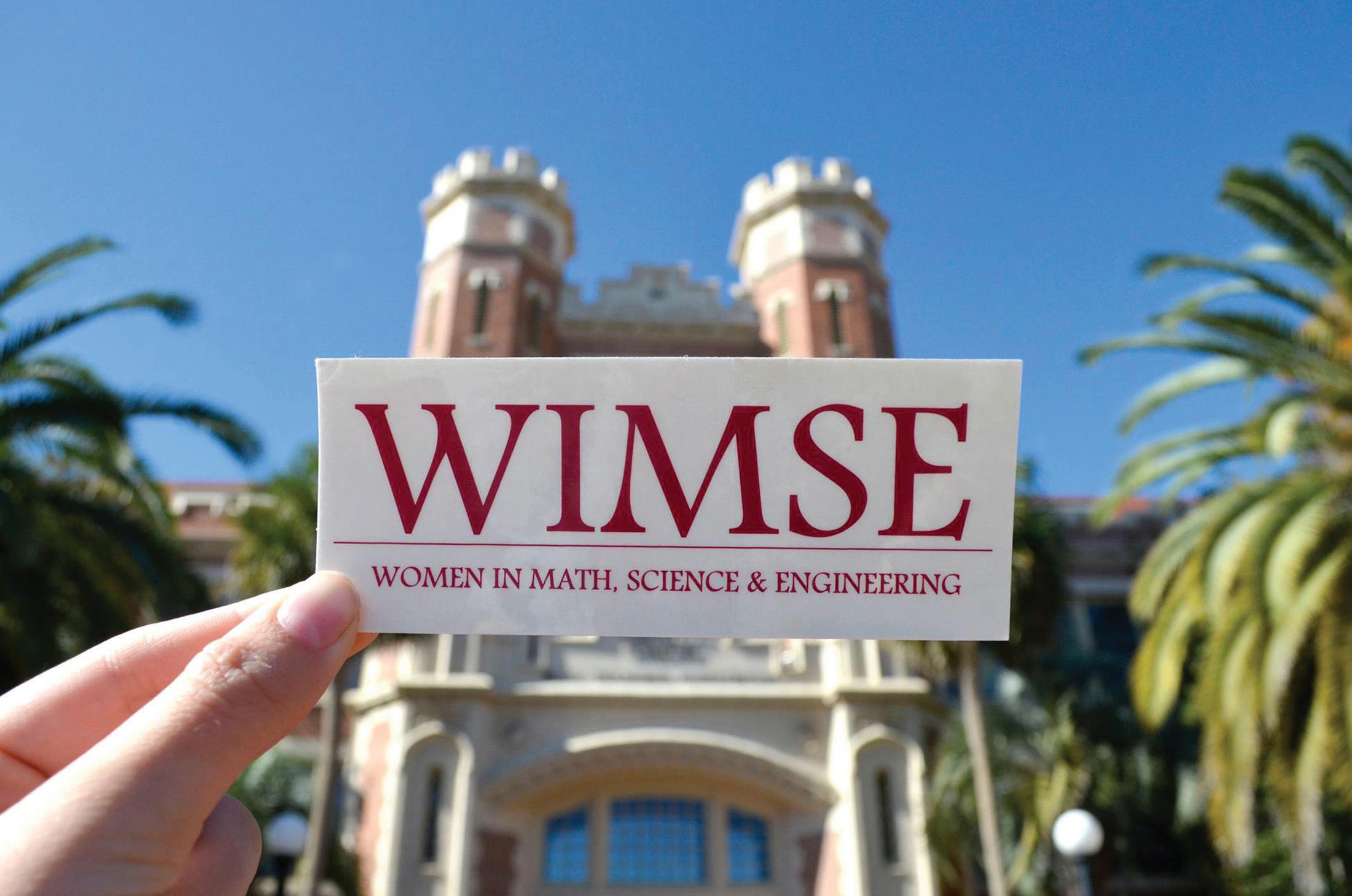
“It all started with one floor in Jennie Murphree Hall,” said Susan Blessing,
physics professor and director of Women in Math, Science and Engineering (WIMSE). “[It] was a program where women in STEM could apply to live on that one floor.”
Today, WIMSE is a Living-Learning Community housed in Cawthon Hall, accepting 33 first-year students each year. Once a resident, students meet weekly for colloquium and participate in
lab visits, social events and one-on-one mentorship sessions.
“We have the WIMSE-to-WIMSE program, a vertical mentorship program,” explained Blessing. A parallel to fraternal “Bigs” and “Littles,” this process breaks down the boundary of accomplishments allowing seniors to share their successes and failures and help newcomers get involved in research.
The program also supports the success of its students beyond their first year. “It’s the only LLC you can stay involved with all four years,” Blessing explained. WMSE invites participants to stay involved beyond its first year and provides opportunities for paid research, an essential part of their undergraduate degree.

“The Research Experience Program (REP) was a great stepping stone to exploring engineering outside the classroom and applying that knowledge to my academics,” said WIMSE alumna Mary Rudenius (B.S. ’22, M.S. ’22), a structural design associate for bridge design at The Haskell Company in Jacksonville, Florida. “I keep in touch with women in my WIMSE cohort, and it is exciting to see them pursue Master’s, Ph.D.s, and diverse, incredible careers in STEM.”
Through REP, WIMSE provides funding for students to work alongside awardwinning faculty and researchers from across the spectrum of STEM. It offers students a tremendous advantage and sets them apart when looking for a job or applying to graduate school. Each spring, WIMSE also hosts a symposium where students showcase their work.
Blessing, an acclaimed physicist, has seen the program’s evolution first-hand. “There were only two students doing research when I started, and today, there are about 20,” Blessing shared. “In the beginning, they exclaim they don’t know anything, but by the
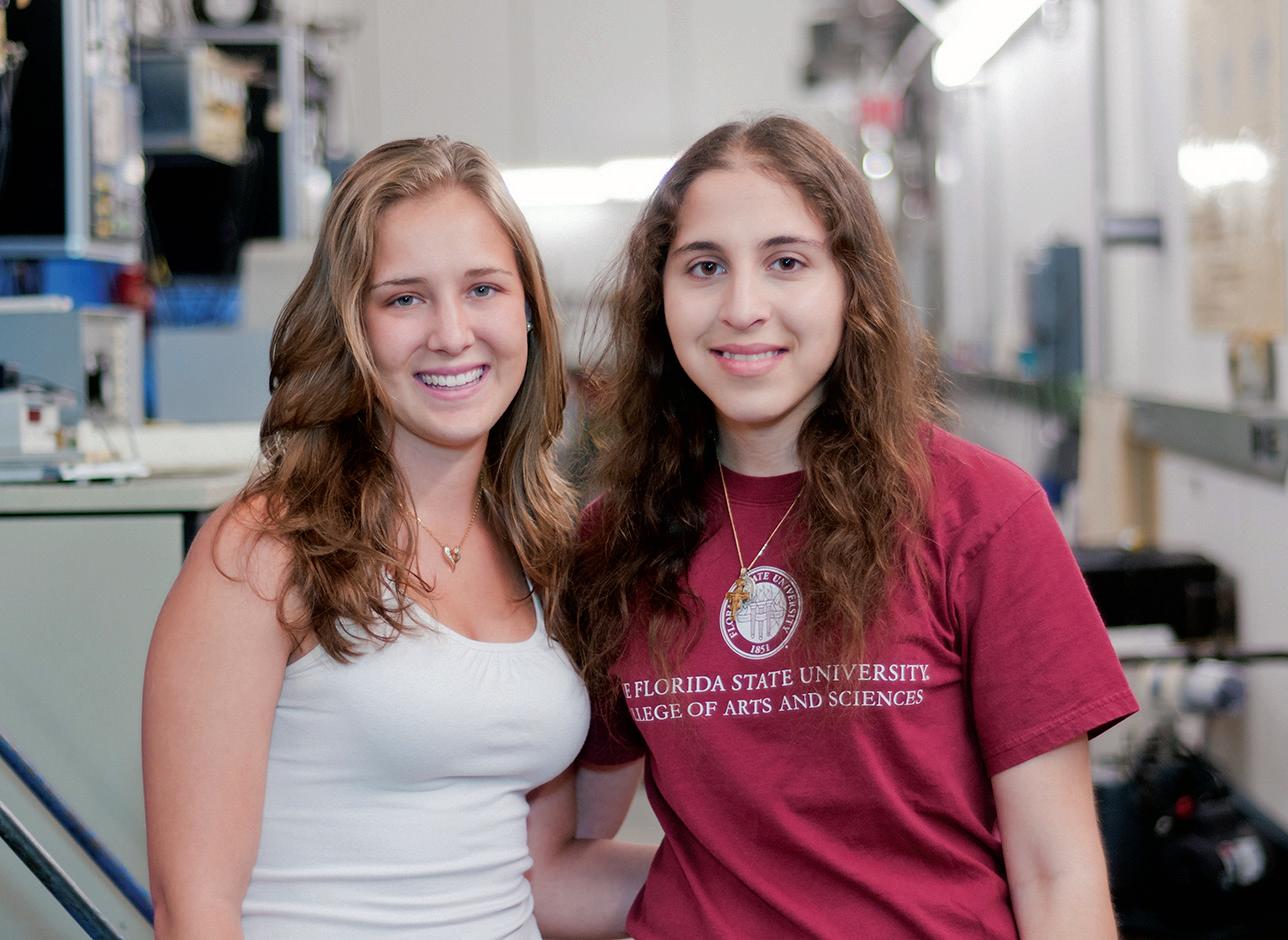
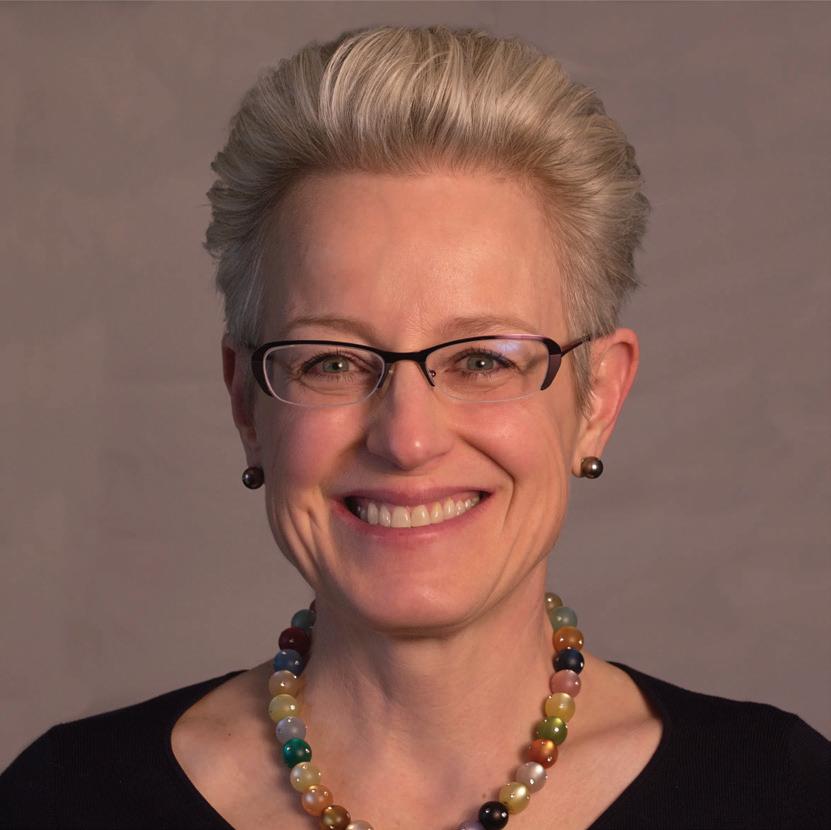
end of the year, I see their understanding come full circle.”
WIMSE provides foundational support to a young woman’s career in STEM and has evolved into an integral part of her academic and professional careers. The program creates a shared space and community culture where women can feel accepted and supported, a validation many may need to gain the confidence required in a male-dominated field.
“It can be incredibly difficult to enter a room and know you don’t fit the typical box of what an engineer looks and acts like,” said graduate coordinator for the Engineering LLC Program and WIMSE alumna Emily Mank (B.S. ’22). “It’s vital in those first couple years of college to have a great support system to cheer you on and remind you that you are more than capable of the role you want. Being able to relate to other women and see the diversity within STEM fields is so important, and it gives you the confidence needed to persevere.
Students represent many disciplines, including math, civil engineering, computer sciences, biology, physics, psychology, behavioral neuroscience and


biochemistry. Alumni of the LLC have gone on to have incredible careers in general and specialized STEM fields such as surgical research, marine biology, viral oncology, nuclear power and mechanical engineering.
Ultimately, WIMSE is more than an academic resource or a residence hall floor; the program empowers and encourages young women to drive progress and impact the world at FSU and beyond.
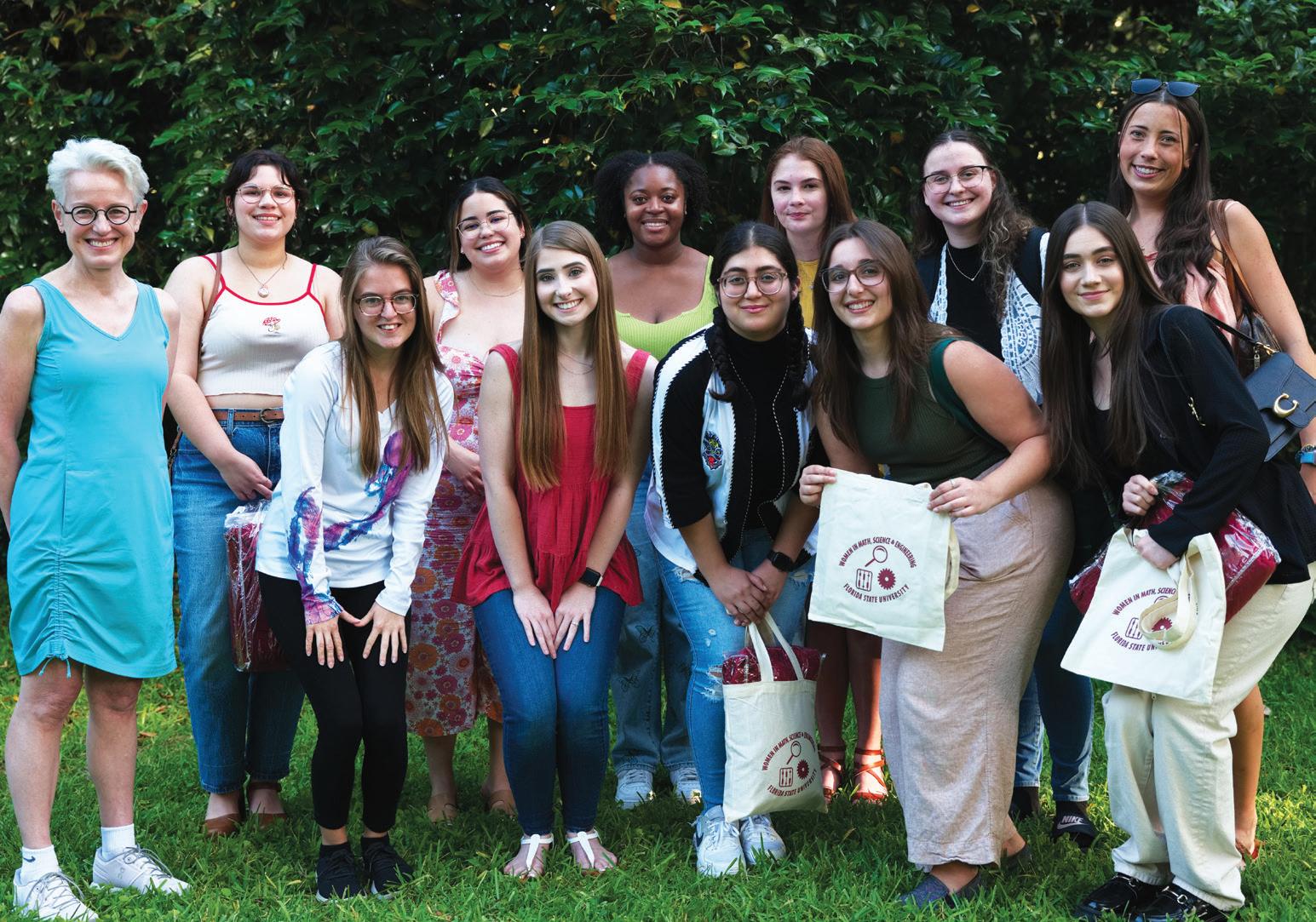

Since 1948, thousands of FSU alumni, parents and friends have returned each year to Florida State’s Tallahassee campus for Homecoming.

FSU is more than a university, it’s the place where people meet their spouse, best friend or mentor,
where milestones, anniversaries and graduations are celebrated and a place that has undoubtedly guided generations of students into new and brighter phases of life. It’s home.

In returning each fall, we soak in the nostalgia of the past


while simultaneously creating memories anew. In this special Anniversary section, we revisit the last seven decades of Homecoming at FSU. And of course, this October, we invite you to join us in celebrating the 75th Anniversary of Homecoming at Florida State University.
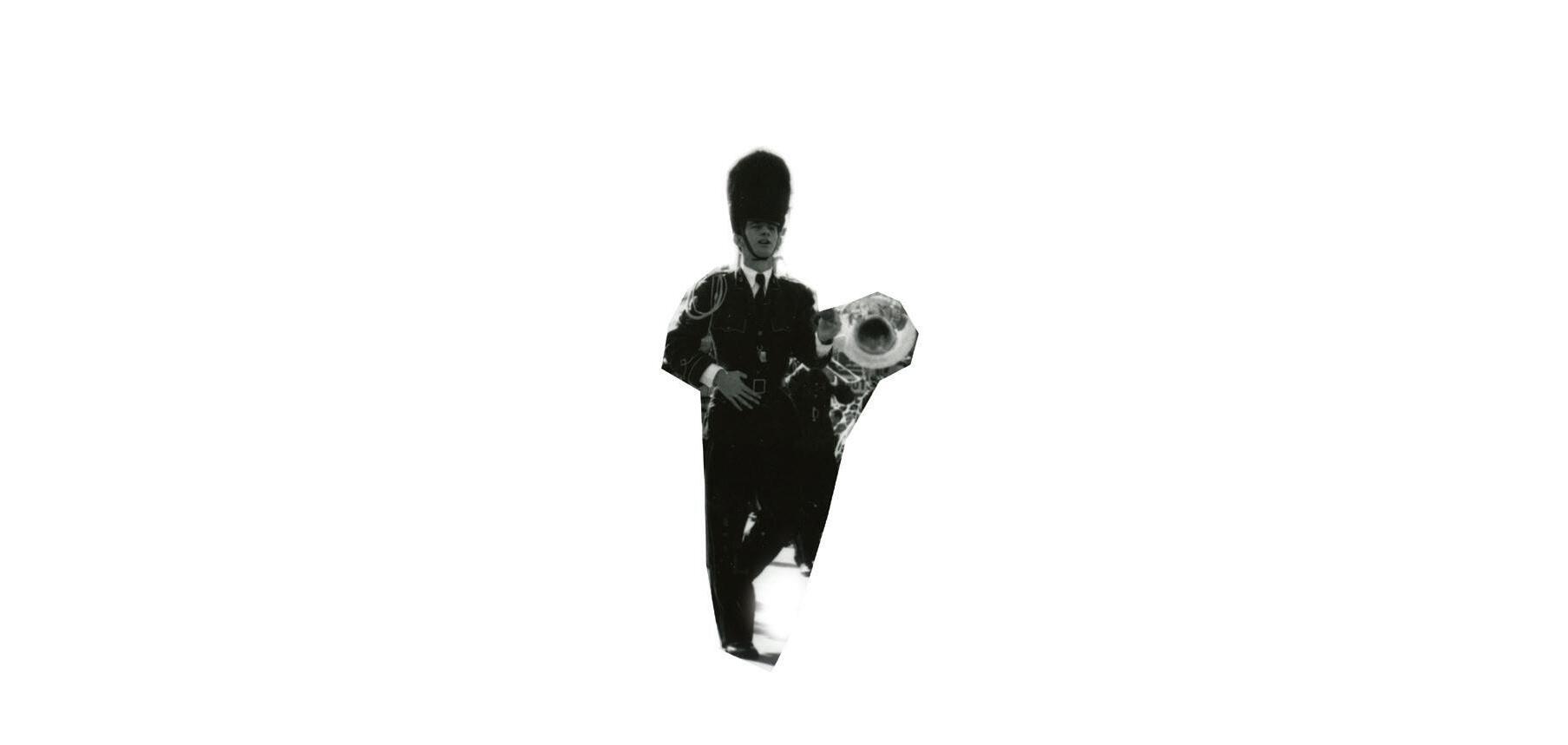
← Left, Florida State University’s first Homecoming Queen Clara Moffitt Moorman (B.S. ’50). Far left, the Homecoming Parade at FSU’s first Homecoming in 1948.
FSU’s first Homecoming was December 3-4, 1948. FSU played the University of Tampa Spartans and won with a 33-12 victory. After the game, students reconvened on campus for a dance that featured Hal McIntyre and his 15-piece MetroGoldwyn-Mayer Orchestra. The dance saw, out of five hopefuls, Clara Moffat Howell crowned FSU’s First Homecoming Queen.
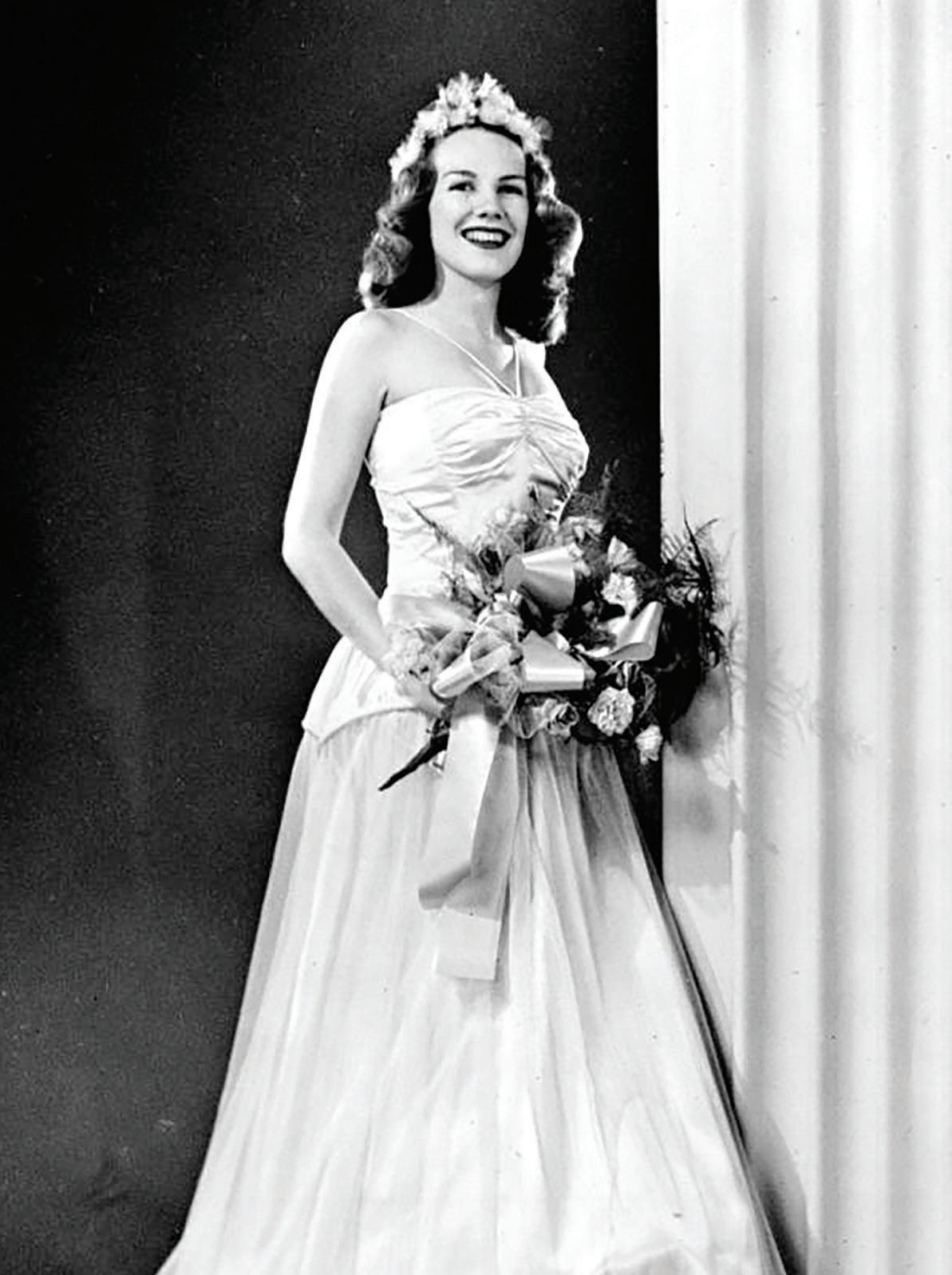

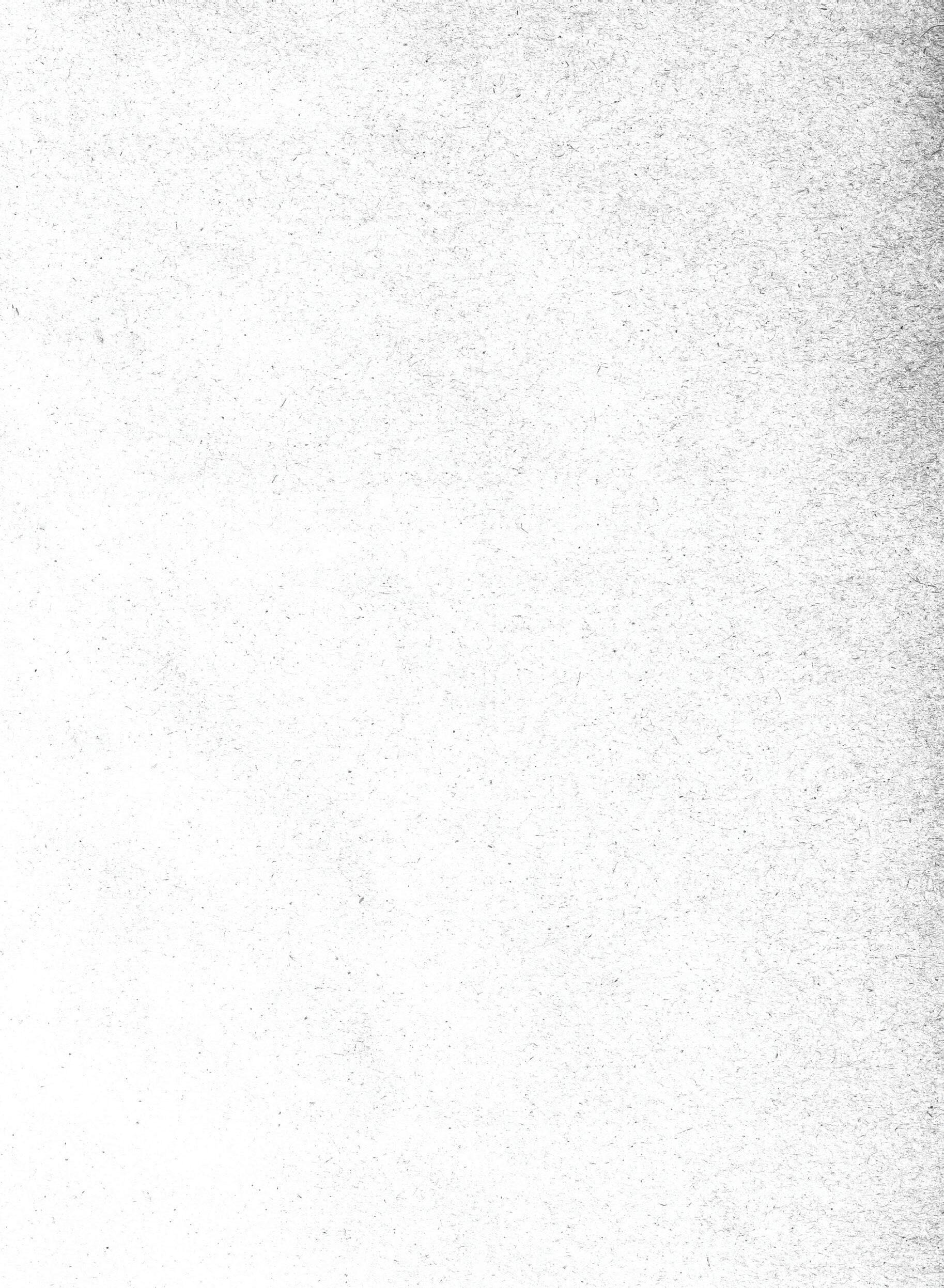
Other events included an eloquent banquet and breakfast in the East Campus Dining Hall (Suwannee Hall) and a barbeque in the West Campus Student Union. The Student Pep Rally was held on Centennial Field (Cascades Park) and was free of charge to all students. The Parade was held on Saturday morning, followed by the biggest game of the year that afternoon. The week concluded with the Homecoming dance.
Though there was no theme or parade Grand Marshall, many of FSU’s greatest traditions began that December. A few of them are no longer like the Homecoming Dance and Tarpon Club exhibition, but many still exist, albeit some in new forms. FSU’s Odd-Even Archery event morphed over the years into the Odd-Even Field Day, and Pow Wow, which existed at that first Homecoming weekend, continues on as Homecoming Live!

These events, no matter their form, are integral to the spirit and excitement of Homecoming for our alumni and students.



During a 1950 Homecoming event, The Collegians, a men’s glee club, premiered FSU’s “The Hymn to the Garnet and the Gold.”

Written by J. Dayton Smith, the song was instantly popular. It soon became a staple at campus events, and young men would even use the song to serenade women in their dorms.
The same year, the Homecoming halftime show included a dedication ceremony naming the stadium in honor of university President Doak Campbell. It included a special performance by the band, christening them the Marching Chiefs and premiering the “FSU Fight Song.”
Student Doug Alley wrote the lyrics to the fight song as a poem that appeared in the Florida Flambeau newspaper. Professor of Music Thomas Wright saw the poem and wrote a melody to it, inspired by the surge of school spirit.
In 1958, another tradition was born as Charlie Carter arranged the music to the “The Hymn to the Garnet and the Gold” for the FSU Marching Chiefs and captured the hearts of alumni, students and Seminole fans. That same year it was performed as the closer to the Homecoming show, cementing it as a Homecoming tradition at Florida State.


Here’s a hymn to the garnet and the gold, ringing to the sky. Here’s a song for the men and women bold, sing with heads held high. Striving e’er to seek to know, fight for victory.

Alma mater, this our song to you echoes F. S. U.
 ↑ Above, 1955 Homecoming Queen Margaret Ann Ballinger McCain (B.S. ‘57). ↓ Below, a parade vehicle drives past Westcott and the Homecoming Program for 1952.
↑ Above, 1955 Homecoming Queen Margaret Ann Ballinger McCain (B.S. ‘57). ↓ Below, a parade vehicle drives past Westcott and the Homecoming Program for 1952.
In 1965 Pow Wow, Homecoming’s student pep rally, began having a feature performance aspect to the program, inviting top recording artists and comedians to campus. Before, the event was only a pep rally to excite students for the annual Homecoming football game.


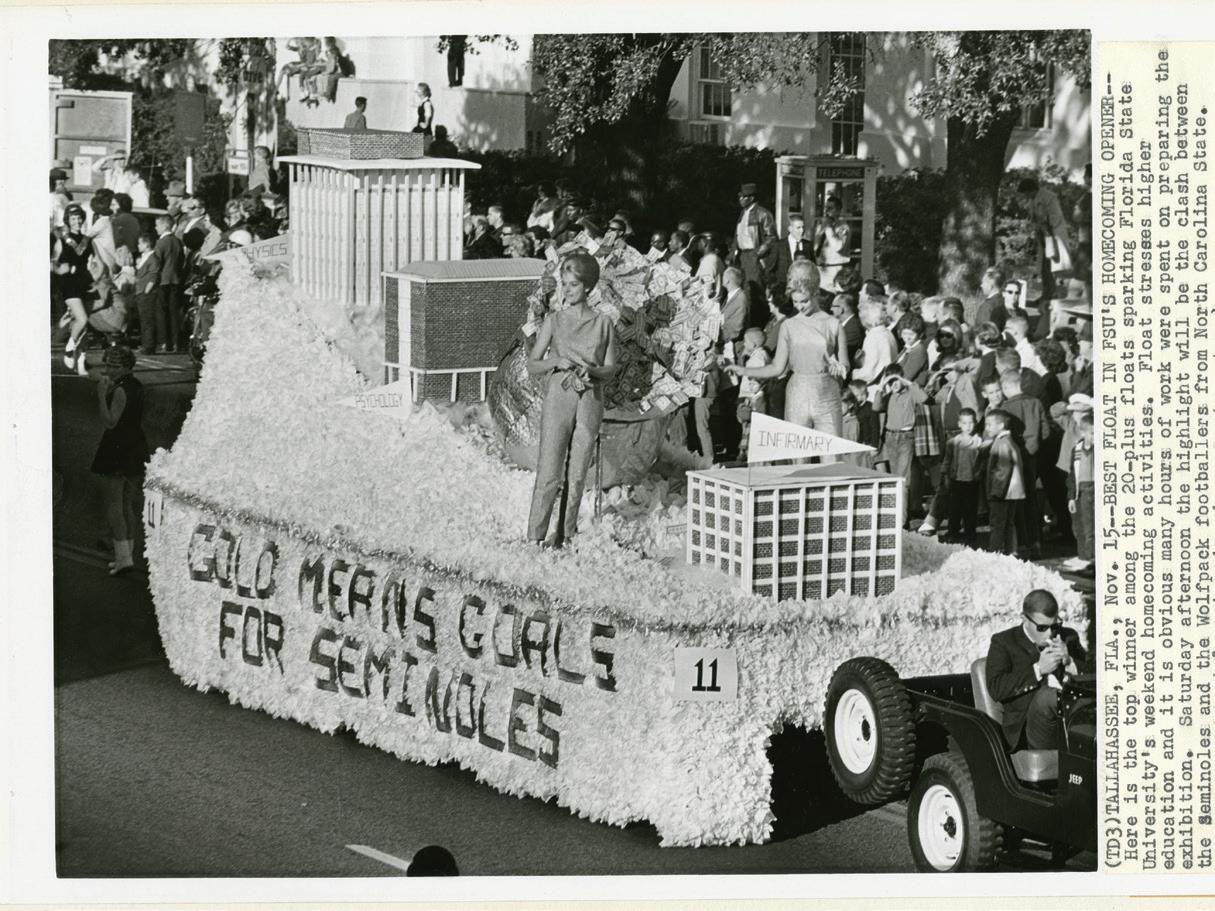
The Pow Wow pep rally was named as a reference to the university's ties to the Seminole Tribe.

Traditionally, Pow Wows are Native American gatherings where American Indians sing, dance, reconnect with old friends and celebrate their rich ancestral histories. Sometimes accompanied by a conference or meeting, Pow Wows are typically a way to celebrate heritage through sharing songs and dancing. While some Pow Wows are closed to the public, many are open to the greater community.

In 2021, the Homecoming Council changed the pep rally’s name to “Homecoming Live” to demonstrate its commitment to diversity, equity and inclusion. The council determined the term should solely apply to an occurrence celebrating the cultures of Indigenous people while being led by Indigenous people.

Since the inaugural 1948 pep rally, the event has also evolved to include a full night of events featuring performances by the FSU cheerleaders, the Golden Girls, the Marching Chiefs and various other student organizations. The event also hosts the crowning of the Homecoming Chief and Princess, recognition for the winners of different homecoming event categories and culminates with a headlining comedian or music artist.
 Clockwise: A season ticket to the 1959 FSU football season, the winning float during FSU’s 1963 Homecoming parade, Katherine Rogers Wade and Terrie Jones distribute Class of ’61 hats and buttons during the 1968 Homecoming and FSU football players prepare for the 1962 Homecoming game against Houston.
Clockwise: A season ticket to the 1959 FSU football season, the winning float during FSU’s 1963 Homecoming parade, Katherine Rogers Wade and Terrie Jones distribute Class of ’61 hats and buttons during the 1968 Homecoming and FSU football players prepare for the 1962 Homecoming game against Houston.

1965 Peter, Paul, and Mary
1966 The Lettermen
1967 Al Hirt
1968 Ray Charles & The Raelettes
1969 Stevie Wonder, Bar Kays, Oliver, Jennifer Warnes, Stu Gilliam
1970 Chambers Brothers and Sugarloaf
1971 Ike and Tina Turner
1972 Associatioin, Bob Seger, Brownsville Station
1973 The Fantasmagical Flash & Filigree Holocaust Flash Cadilac, Steve Martin and more.
1974 Seals and Croftv
1975 Stephen Stills and the Outlaws
1976 Cheech and Chong, Little River Band, Meisburg & Walters
1977 Kris Kristofferson, Rita Collidge, Billy Swan, Barbara Carroll
1978 Winter Brothers Band
1979 Bill Cosby, Sea Level, Leroux
1980 Little River Band, Dirt Band
1981 Beach Boys
1982 Bob Hope, Gary U.S. Bonds
1983 Talking Heads
1984 Chicago, Alan Kaye
1985 Chuck Berry, Martha Reeves, Sam Moore
1986 Jimmy Buffet and the Coral Reffer Band
1987 The Outfield, Jimmy Davis, & Junction
1988 Rod Stewart
1989 Jay Leno, Cherelle
continue on page 62


1970 Doby Flowers (B.S. ’71, M.S. ’73), FSU’s first Black Homecoming Queen, is crowned.
1971 Cynthia Moore Chestnut (M.S. ’71), FSU’s last official Homecoming Queen, is crowned.
1972 Ron Shank (B.S. ’79), a male contestant, technically wins the title of Homecoming Queen but is never crowned.
1974 Ruby Diamond, Class of 1905, is named the first Grand Marshall of the Homecoming Parade.
1974 The Interfraternity Council founds the Homecoming Chief and Princess tradition, and FSU elects its first Homecoming Chief and Princess: Steve Lancaster and Julianne Sewell.
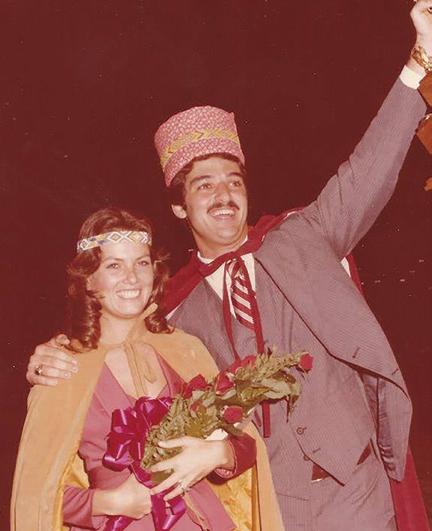
1975 Chief Howard Tommie of the Seminole Tribe of Florida joins the Homecoming Steering Committee, thus cementing the tribe as an integral part of FSU Homecoming.
1976 Seminole Tribe of Florida member Gloria Wilson is the first Seminole Princess to crown an FSU homecoming court.

1976 FSU begins its longest streak of consecutive wins in Homecoming games with 25 wins from 1976-2000.
1978 The Renegade Program begins. Founded by Bill Durham (B.S. ’65), the Osceola and Renegade tradition didn’t manifest until 25 years after initially proposing the idea for the 1962 Homecoming.
↑ Above, 1970 Homecoming Queen Doby Flowers (B.S. ’71, M.S. ’73) poses in the Homecoming regalia of the time. → Right, 1977 Homecoming Chief and Princess, Charlie Crist (B.S. ’78) and Ginger White Stehlin (B.S. ’79).
In 1980 FSU crowned its first Black Homecoming Chief, Cecil Howard (B.S. ’81). Shortly after in 1983, the first Florida State University Black Alumni reunion took place and served as the foundation for the FSU National Black Alumni (BA), a chartered constituent of the FSU Alumni Association.
Each year following, BA has held an annual reunion during Homecoming weekend, with 2023 marking the 40th anniversary of their reunion. Howard would go on to be the president of FSU BA from 1987 to 1989.


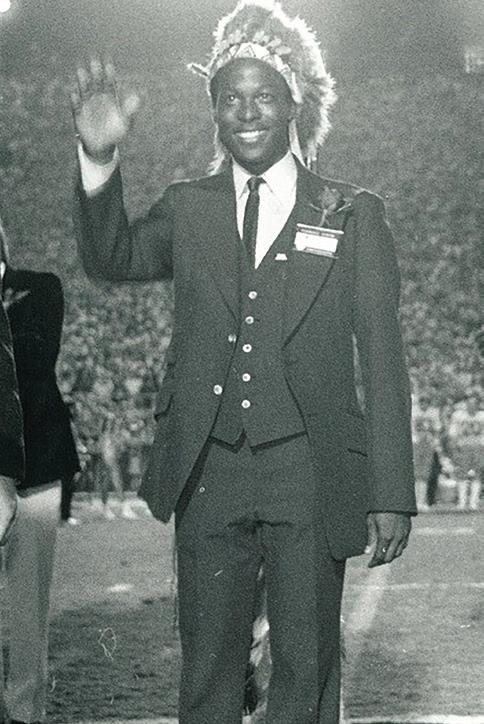
LEARN MORE fsublackalumni.org


 ↑ Above, the 1984 Homecoming Parade. ← At left, Cecil Howard (B.S. ’81) takes the field as FSU’s first Black Homecoming Chief. ↑ Right, 1988 Homecoming Princess Debby Olsen Moorman (B.S. ’89) gets a kiss from Chief Charlie Alvarez (B.S. ’89).
↑ Above, the 1984 Homecoming Parade. ← At left, Cecil Howard (B.S. ’81) takes the field as FSU’s first Black Homecoming Chief. ↑ Right, 1988 Homecoming Princess Debby Olsen Moorman (B.S. ’89) gets a kiss from Chief Charlie Alvarez (B.S. ’89).
In 1992, the former Student Alumni Foundation changed its name to the Student Alumni Association (SAA), thus setting it on a trajectory to become one of the largest student organizations on campus.





SAA administers the annual Homecoming Chief and Princess program, in which six men and women are selected to represent their class. Interested participants go through a lengthy application process and are selected based on scholarship, campus involvement and school spirit.
The Chief and Princess are announced and crowned at Homecoming Live! During the Homecoming game’s halftime show, the newly crowned Chief and Princess are presented with authentic Seminole headdresses from members of the Seminole Tribe.
 Clockwise: A student beats the drum down College Ave., 1991 Homecoming Chief and Princess, Abne Devallon (B.S. ‘92) and Sandra Leff Schittone (B.S. ‘92) and members of the FSU Alumni Band sit in the stands at Doak Campbell Stadium.
Clockwise: A student beats the drum down College Ave., 1991 Homecoming Chief and Princess, Abne Devallon (B.S. ‘92) and Sandra Leff Schittone (B.S. ‘92) and members of the FSU Alumni Band sit in the stands at Doak Campbell Stadium.
Throughout the early 2000s, the week of Homecoming expands.


In 2003, Philanthropy Day and Renegade Rally were introduced to the schedule as well as the first Warchat concert setting off the addition of several other new events.
The current week-of schedule includes many student-centered events such as Spirit Night, Search for a Cause, Seminole Festival, Odds and Evens, the Homecoming Parade, Homecoming Live, the Garnet and Gold Tailgate, Marching Chiefs Annual 5k and more.

1990 Bruce Hornsby and the Range, Richard Jeni
1992 Bobcat Goldthwait, Kevin Nealon, J. Sweeney
1994 Jeff Foxworthy, Chris Spencer

1995 Adam Sandler
1996 Carrot Top
1997 David Spade, J.B. Cook
1998 Jay Mohr
1999 Sinbad
2000 Dave Chapelle
2001 Andy Dick, Vic Henly
2002 Dane Cook
2003 Cedric "The Entertainer"
2004 Larry the Cable Guy
2005 Carlos Mencia
2006 Stephen Colbert
2007 Sarah Silverman

2008 Jimmy Fallon
2009 Jim Gaffigan
2010 Fred Armisen and John Oliver
2011 Craig Ferguson
2012 Kathy Griffin
2013 Nick Offerman and Retta
2014 Kenan Thompson and Colin Jost
2015 Amy Schumer


2016 Whitney Cummings
2017 Hannibal Buress with Jak Knight
2018 Nick Kroll
2019 Pete Davidson with Ricky Velez
Clockwise: Members of the Asian American Student Union and Greek Life ride in a parade float, nursing students wave to the crowd from their parade float and 2001 Homecoming Princess Dazi Lenoir (B.A. ‘02, M.S. ‘03).In 2010, the Student Alumni Association (SAA) partnered with the Baptist Collegiate Ministry (BCM) to underwrite the Garnet and Gold Guys as an official tradition of Florida State University. Unofficially the tradition has continued without interruption since 1998. Each year the BCM chooses a Garnet and Gold chosen and theyOne of many over the years, this reunion saw the recreation of iconic photos, the bridging of generations and all of FSU’s traditions, new and old, in full effect.

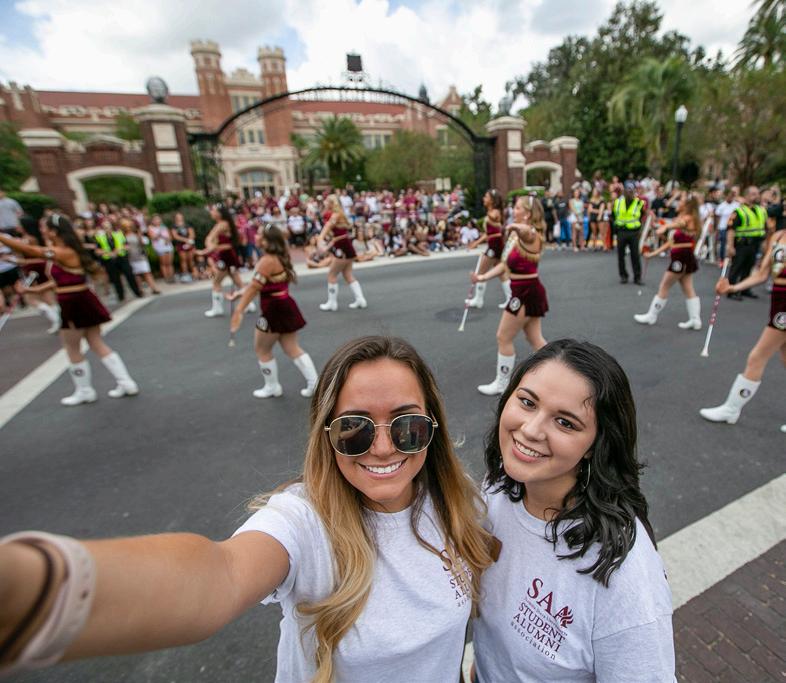


Josh White (B.A. ‘00, J.D. ‘03) and Kevin Fulmer (B.S. ‘99, M.S. ‘01) were the first Garnet and Gold Guys.


 Clockwise: SAA students at the FSU Homecoming Parade, the golden girls light up the stage at Pow Wow, the Garnet and Gold Guys hype up the crowd at the parade and lastly, Jr. Miss Florida Seminole Allegra Billie crowns 2018 Homecoming Princess Taylor Knight (B.A. ‘19).
Clockwise: SAA students at the FSU Homecoming Parade, the golden girls light up the stage at Pow Wow, the Garnet and Gold Guys hype up the crowd at the parade and lastly, Jr. Miss Florida Seminole Allegra Billie crowns 2018 Homecoming Princess Taylor Knight (B.A. ‘19).
In 2013, the Noles win another National Championship, beating the Auburn Eagles 34–31.
The 2020s have been, well, weird. Between a global pandemic, multiple tropical storms and hurricanes, Homecoming hasn’t quite been the same over the last few years.



But the FSU community remains unconquered — we’ve found innovative ways to celebrate and engage the spirit of Homecoming despite the challenges.




All of which makes this year a particularly exciting time to be celebrating the university’s 75th annual Homecoming. We hope to see you there.
SAVE THE DATE
Homecoming 2023: October 16 - 22
 Clockwise: Seminole Dance Force brings the energy to the 2021 Homecoming Parade, Head Drum Major Jordan Fraze (BME ’22) leads the Marching Chiefs at a virtual Homecoming Live! in 2021 and 2022 Homecoming Chief and Princess Alexander Chang (B.S. ’23) and
Clockwise: Seminole Dance Force brings the energy to the 2021 Homecoming Parade, Head Drum Major Jordan Fraze (BME ’22) leads the Marching Chiefs at a virtual Homecoming Live! in 2021 and 2022 Homecoming Chief and Princess Alexander Chang (B.S. ’23) and
One of the most iconic ways the Seminole Tribe of Florida contributes to Homecoming is through the involvement of Miss Florida Seminole and Jr. Miss Florida Seminole from the Tribe’s Princess Program. The Princess Pageant, an annual pageant that promotes camaraderie, sisterhood and leadership, began in the late 1950s when the tribe sought an ambassador to represent the tribe externally. By 1960, the tribe held its first contest; the rest is history.
Those honored with the titles participate in various events and functions on Seminole reservations, throughout Indian Country and beyond, including tribal functions, pow wows, Hard Rock openings and FSU Homecoming.
Both Miss Florida Seminole and Jr. Miss Florida Seminole are celebrated in the homecoming parade, attend various Homecoming events and perform the crowning of Chief and Princess with handmade Seminole regalia. Members of the tribe also attend homecoming as vendors to share, showcase and sell beaded jewelry, patchwork clothing and other arts and crafts.

In tribute to the unconquered people of the Seminole Tribe of Florida, Bill Durham (B.S. ’65) created the Osceola and Renegade Pageantry – a Florida State University student portraying the great Seminole warrior, Osceola, planting a flaming spear astride a horse named Renegade. In 1977, Durham met with Chairman Howard Tommie at the Seminole Tribe Reservation to seek permission for the portrayal of Osceola at Florida State University. With the Tribe’s support, the tradition began in 1978. 45 years later, the Osceola and Renegade tradition is still one of the most enduring and beloved symbols at FSU.

Clockwise: Osceola and Renegade at the 2022 FSU vs. UF game, Influential leader of the Seminole Tribe Billy Powell or “Osceola” painted by George Catlin and a 1980’s photo of Osceola and Renegade at Doak Campbell Stadium.

The very first Renegade, an Appaloosa horse, was donated by Tallahassee veterinarian, Dr. Jerry Deloney.
Jim Kidder (B.S. ’81, B.S. ’82) was the first student to portray Osceola.



The 1978 FSU vs. Oklahoma game was the first to feature Osceola and Renegade.

October 13


Chalk on Legacy Walk*
Noon – 4:30 p.m.
Legacy Walk
October 16
Spirit Night*
7 – 9 p.m. Union Ballrooms
October 17
Garnet and Gold Jamboree*
2 – 5 p.m. Union Ballrooms
October 18
Chief and Princess Voting*
8 a.m. – 5 p.m.
Homecoming Festival*
1 – 5 p.m.
Landis Green
October 19
Odds & Evens*
5 – 8 p.m.
Main Campus Fields
NPHC Homecoming Step Show
7 p.m. Union Ballrooms
October 20

Emeriti Alumni Society
Welcome Luncheon
11:30 –1 p.m.
Dunlap Champions Club
Homecoming Parade
2 p.m. College Avenue
NPHC Market Friday
2 – 5 p.m. Club Downunder
FSU Alumni Awards
5 p.m. Dunlap Champions Club
Homecoming Live!
7 – 10 p.m. Tucker Civic Center
Opening Nights: The Gipsy Kings ft. Nicolas Reyes
7:30 p.m.
Adderley Amphitheatre at Cascades Park
October 21
FSU Alumni Homecoming Breakfast
9 a.m. Alumni Center Ballroom
College of Social Work’s Homecoming Breakfast
9 – 11 a.m. Hotel Duval
Garnet and Gold Tailgate*
3 hours before kickoff Student Union Plaza
FSU National Black Alumni
Tailgate
3 hours before kickoff
Black Student Union House
Homecoming Game
FSU vs. Duke Doak Campbell Stadium
October 22
7th Annual Marching Chiefs 5K
9 a.m.
Bill Harkins Field (Chiefs Field)
Emeriti Alumni Society Awards and Induction Brunch
10 a.m. Alumni Center Ballroom
FSU National Black Alumni Awards and Scholarship Ceremony
11 a.m.
Black Student Union House
The Student Alumni Association needs vehicles to participate in the 75th Annual Homecoming Parade. Trucks, convertibles and Jeeps that can pull a float or carry participants are ideal. If you are local to Tallahassee or planning a trip in town for Homecoming and are able and interested, please reach out to Landon Weeks, Student and Alumni Engagement Coordinator. lweeks@fsu.edu

alumni.fsu.edu
homecoming.fsu.edu
850.644.2761
alumni@fsu.edu


The Florida State University Alumni Association invites you to experience culturally rich travel destinations hand-selected with FSU alumni and friends in mind. Our highly respected travel partners take care of our tour planning and logistics, so you can relax and enjoy your trip.
We have selected world-class guided tours with unique itineraries. Each destination offers an opportunity to visit iconic landmarks, sample authentic cuisine and truly experience the local culture with other Noles! We hope you will join us.
Tropical Costa Rica
January 22 – 30, 2024
Explore Switzerland, Austria & Bavaria

April 3–12, 2024
Memorials of World War II
October 27–
November 6, 2024
YOUNG ALUMNI
Essential Europe
May 13–30, 2024

Ciao Italy
August 31–September 8, 2024
Peru’s Inca Trail
October 5–12, 2024
SPORTS & ENTERTAINMENT
The Masters Tournament
April 10–13, 2024
The Kentucky Derby
May 1–5, 2024
The Indianapolis 500
May 24–27, 2024
LUXURY
Antarctica Discovery
January 11–22, 2024
The Galapagos Islands
January 20–27, 2024
Southwest National Parks
May 5–9, 2024
Kenya Safari: The Big 5

June 26–July 6, 2024
Discover Southeast Alaska
July 26–August 2, 2024
All travel dates are subject to change.
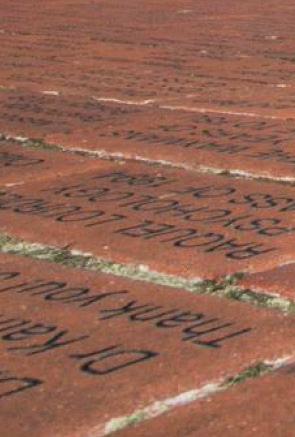




AFlorida State University alumnus and former health care consultant has left an estate gift to support women majoring in STEM fields at FSU.

Marc Julius (B.S. ’63) , who received a dual degree in chemistry and microbiology from FSU, has gifted an estimated $10 million to endow scholarships and program support for FSU women with unmet financial need and high potential who are pursuing degrees in STEM-related majors.
“We’re humbled and grateful to be part of Marc’s extraordinary legacy of promoting women in science,” said Richard McCullough, President of Florida State University. “We know our students will benefit greatly from this generous and transformational gift.”
Julius shared that his gift was inspired in part by his observation throughout his career, including his time as the CEO of a successful healthcare consulting firm, that women were not always well-represented in STEM-related fields.
The Dezso and Fanny Julius Scholars Fund will provide scholarships to eligible students who are expected to engage in supervised, independent research. While all applicants will be fully considered, preference will be given to women.
After graduating from FSU, he earned graduate degrees in biochemistry from Princeton University and the Massachusetts Institute of Technology. He remarked that his FSU degree prepared him to excel among some of the top students in the country.
He retired to Siesta Key, off the coast of Sarasota, where he lived until his death in January of this year. Upon receiving news of a terminal illness, he solidified his plans to leave a legacy for future students at FSU.
“This incredible gift will help generations of students excel in STEM majors,” said Joe O’Shea, associate provost and dean of the Division of Undergraduate Studies. “Dezso and Fanny Julius Scholars will receive considerable
financial support, community building and professional development so they can thrive at FSU and beyond.”
Julius named the fund for his parents, Dezso and Fanny Julius, who taught Marc and his siblings the value of education and perseverance.
Both of Julius’ parents endured financial struggles where they grew up — Dezso in Kolozsvar, Hungary, and Fanny in Brooklyn, New York. They met while working at the same resort hotel in New York State after Dezso fled ethnic and religious persecution as a result of the Hungarian Romanian War and escaped to the United States. The couple eventually moved to West Palm Beach, where they operated a successful family restaurant.

The Dezso and Fanny Julius Scholars Fund fulfills Marc Julius’ wish to “leave a legacy to honor the lesson his parents taught him about the power of resilience and the importance of education and overcoming obstacles.”
Before his passing, Julius provided initial funding for these scholarships and supported four students — the first Dezso and Fanny Julius Scholars.
One of those students was Djaina-Shae (Nina) Dervil (B.S. ’23), who graduated with her degree in behavioral neuroscience this spring. A first-generation college student, Dervil said the scholarship alleviated financial obligations while she completed the rigorous Honors in the Major Program. The support defrayed her undergraduate education expenses, making it possible for her to pursue a medical degree and opportunities in the Fulbright Program.

“When I was awarded the scholarship, I felt so honored and motivated as a STEM major to continue my research and my progression within both medicine and academia,” Dervil said. “This scholarship showed the potential in me and helped me overcome obstacles.”
The Julius family has strong ties to FSU. As an FSU student, Julius was inducted into Phi Beta Kappa, Phi Kappa Phi and Phi Eta Sigma honors societies. He also was president of Tau Epsilon Phi social fraternity, a member of the Interfraternity Council, and staff photographer for FSU’s daily newspaper, the Florida Flambeau.
His sister, Lynn Givens, served as a professor in the College of Education until she retired in 2021.
“Thanks to Marc’s extraordinary generosity and vision, the Julius family will play an important role in this university forever,” O’Shea said.
LEARN MORE about planned gifts fsu.planmygift.org
GIVE TODAY to the The Dezso and Fanny Julius Scholars Fund gonol.es/JuliusScholars
For many students, attending college comes with financial strain. Despite Florida State University’s incredibly low cost of tuition and flexible financial aid, many students still need help to afford the expenses associated with the college experience. In addition to the cost of books, lab fees and transportation, students often need guidance fitting into the workplace.
Professional clothing, in particular, is also a barrier to entry for many low-income students who may need multiple pieces to build a wardrobe. In turn, many universities are addressing those concerns with closets or programming that provide professional clothing to students.
At FSU, the ProfessioNole Clothing Closet allows students free professional attire for career fairs, interviews, conferences, or general workwear. The Closet supports students who are about to step into their first professional roles but lack the appropriate clothing needed to feel confident and perform at their highest level.

Since 2016, the Closet has grown in popularity, with hundreds of students shopping the Closet each semester. They heavily rely on donations from alumni, the Tallahassee community and recruiting organizations to keep up with student demand.
While business or finance may be top of mind for many donors, students of all disciplines need support. Recently, a pre-medical

freshman discussed all the upcoming job shadowing and networking events she’s participating in but needed to have attire. Without the ProfessioNole Clothing Closet, she wouldn’t have been able to transform her wardrobe to support her budding medical career or have the confidence to feel her best at each event.
Alumnus John McFarlain of Tal Search Group knows the power of supporting the next generation of Noles and generously demonstrated that support with two Platinum-level gifts. This funding elevated the student shopping experience with a California Closet installation and purchased new clothing to fill sizing

gaps and ensure an inclusive shopping experience.
“Florida State University Career Center and Seminole Futures’ led me to my first career opportunity in the staffing industry, and today, they continue to help students make that link from student to professional,” said McFarlan. “By supporting the Clothing Closet, we can directly impact young professionals’ careers by helping future leaders make a great first impression with potential employers.”
LEARN MORE career.fsu.edu
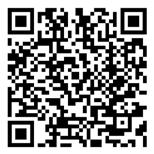


GIVE TODAY gonol.es/ProfessionNole
For clothing donations, their Amazon Wishlist and gift cards, please reach out to Heather Lazar at heather.lazar@fsu.edu. Individuals and organizations interested in contributing a legacy gift should contact Christy Mantzanas at cmantzanas@fsu.edu.



Their constant evolution is what makes STEM fields so exciting. The vastness of Science, Technology, Engineering and Math allows anyone to blaze their own path and make a difference. Here, we introduce you to a few of our alumni who have done just that. By leveraging their passion, discipline and degree from Florida State, they’re impacting lives, bettering our communities and changing the world.
Ralph Devitto has always wanted to help people. Even as a history major at Florida State University, he was looking for a way to make a difference. “There are many people hurting, and they don’t always have the answers. They can be hit with terrible news, and they don’t always know where to turn, said Ralph DeVitto, President and CEO of the American Brain Tumor Association (ABTA). “I wanted to be a part of organizations that could give people direction, understanding and offer a community that could be there for them.”
At ABTA, DeVitto is responsible for enhancing their already strong reputation as the go-to source on brain tumor-related science and treatments and leads efforts to develop further learning resources, tools and activities related to information availability and treatment for patients, survivors and caregivers.
But a history major? DeVitto received his Bachelor of Arts in History and Government from Florida State University in 1980. Despite his career path’s departure from his course of study, DeVitto has no

regrets. “Going to FSU was a fantastic opportunity. The professors were thorough and passionate about the subject matter,” said DeVitto. “They helped me to examine situations from many sides and communicate.”
Those skills propelled him into a decades-long career helping others, including a 20-plus-year tenure at the American Cancer Society. In his last five years at ABTA, he’s found even more things to learn. Things about brain tumors, of course. “We’re called the American Brain Tumor Association, not the American Brain Cancer Association,” emphasized DeVitto. “Many don’t realize that twothirds of brain tumors are not malignant. Notice I didn’t say benign. But even when it isn’t malignant, it’s still often life-altering because of changes one might need to make.”
But education is no match for the community, which serves as a guiding principle in DeVitto’s work as president and CEO. “I’ve learned so much from the neuro-oncology professionals, nursing staff and social working staff,” said
Devitto. “ But spending time with brain tumor patients and survivors has been the most inspiring.”
The future is bright for DeVitto and ABTA. The organization celebrated its 50th anniversary earlier this year. A milestone that subsequently launched a five-year, $50 million three-pillar campaign. The campaign will triple their spending on brain tumor research, double the reach of brain tumor patients and activate their volunteers to boost government spending on brain tumor research.
For Devitto, though, it still goes back to the patients. “With the community affected by brain tumors, that they know free of charge they can get an education, support and a community behind them…It feels good to be a part of that.”
LEARN MORE abta.org
In her first year at FSU, Nancy Jordan did something a little different for her spring break. At the time, Jordan was 27-years-old, and a young mom pursuing a Biological Sciences degree at Florida State. She wanted to make her time in school count, so she signed up for an externship over spring break to get field experience.
That week, she followed wildlife biologists around the Apalachicola National Forest, accompanying them on their projects involving woodpeckers, fish ponds, and wood ducks and fell in love. She couldn’t believe people actually got paid to do science, research and conservation work in the woods. “I didn’t realize what you could do with wildlife biology until that spring externship,” she said.
From then on, she was hooked – and pursued a career working in the woods. She’s been a U.S. Fish and Wildlife Service biologist for 18 years, specifically stationed at the Carolina Sandhills National Wildlife Refuge in McBee, South Carolina, for the last 14 years.
She’s the sole biologist at the refuge and is responsible for managing the 45,000acre longleaf pine-wiregrass ecosystem and
ensuring it remains a sustainable habitat for all the wildlife who call it home, including the red-cockaded woodpeckers, an endangered species.
Jordan has spearheaded a multi-year effort to help recover the red-cockaded woodpecker population at Sandhills and has successfully recruited a healthy group of woodpeckers to live in the refuge. One of the keys to her success has been creating artificial cavities in longleaf pines to entice woodpeckers to move in with their families and call Sandhills home. She hit her goals for the woodpecker population three years ago and says Sandhills is now “quite saturated” with 161 potential breeding groups of woodpeckers.
Her efforts have been so successful that she’s helped other groups build their local woodpecker population and has donated woodpeckers from Sandhills to other regions to help facilitate the reintroduction of the species in other areas.
Woodpeckers are just one of many species that Jordan works with. She also recently introduced a management plan for quail and is gearing up to work with the local bat population in Sandhills. On top of her work with wildlife, she also conducts
prescribed burning to reduce fuel loads and prevent wildfires. She also works on public outreach initiatives to help educate people about the importance of conservation and was named the USFWs Southeast Region Biologist of the Year in 2017 for her many contributions to Sandhills.

She points to her time at FSU as instrumental in her success and continued interest in the field. Classes and programs continually fueled her spark of excitement for wildlife biology. During her time at FSU, Jordan ventured all over the southeast with FSU researchers working with bluefin killifish populations, sea urchin fertilization and ants in pine forests.
“FSU really fueled my interest and passion for these wonderful landscapes that were right around me, that I didn’t even know about,” Jordan said. “The evolutionary biology and ecology program gave me the tools and knowledge to understand how to do my own research.”
It’s evident that her appreciation for natural spaces still drives her work. She lights up when she talks about her work – and the many species she interacts with. And if there’s one thing that she hopes people learn from visiting the refuge, it’s to cultivate their own sense of wonder and respect for the outdoors.
“The natural world is wonderful and exciting, and I want other people to feel that, too, because conservation is crucial not only for clean air, clean water, and a healthy ecosystem but also for quality of life,” she says.
“The creativity of the natural world is mind-blowing, and I think people can appreciate that if they go for a walk in the woods and spend time looking around.”
Barbara, telephone! It’s NASA!” The phone call came from a landline phone in FSU’s Smith Hall dormitory, and it was a call that then-resident Barbara L. Brown would never forget.
A child of the Star Trek generation, working for NASA had long been Brown’s dream, especially after watching the launch of Apollo 11 in 1969. “I can remember having goosebumps and thinking that it was the greatest thing I had ever seen and just wishing I could be a part of it,” said Brown. “That feeling never left me.”
It wasn’t long before she made that wish a reality. After starting as a student intern with NASA, Brown has worked her way up to the Director of Exploration Research and Technology Programs at NASA’s John F. Kennedy Space Center.
Brown’s current position consists of two roles. One is managing a team that helps prepare payloads for the International Space Station, such as food, breathing air tanks and experiments like crop production. She also oversees teams that perform research and technology development. A few of their projects include looking at how to mitigate and remove dust that stirs up when landing on a surface and how to use gasses that can be extracted from heating up trash.
Brown and her teams are preparing for the upcoming Artemis lunar missions, and she’s developing concepts for uncrewed surface missions. Autonomy has long been the focus of her career, a passion sparked by Star Trek.
“If you’ve ever watched the show, typically, the ship itself would alert when it was malfunctioning or was about to malfunction,” said Brown. “I said, ‘That’s what I want to do.’ I was always looking at how to use the computer to help make humans’ jobs easier.”
Brown had her first Star Trek moment when she developed a software system called KATE: Knowledge-based Autonomous Test Engineer. She designed it to diagnose problems when loading liquid oxygen onto shuttles. While she was testing KATE in the Launch Control Center during a shuttle launch, her system not only recognized a failure but caught it 20 minutes before the official system did.
It’s just one of the many highlights of Brown’s career, which she describes as “one stellar moment after another.” Other fond memories she has include becoming the first Black woman to manage a vehicle test flight program, which earned her an invitation to the White House.
Another was when she discovered why a system wasn’t working, thanks to the knowledge she gained from a Florida State University class about relational databases.
“I can remember being called into a meeting with maybe 80 people to discuss why one of the systems wasn’t working,” said Brown. “They had hired a consultant to come in, and he had me sit down next to him, and he said, ‘It’s what she said. She was right.’”
She credits much of her experience at FSU with getting her where she is today. “The coursework really did fully prepare me to be successful in this career with NASA, and it would have prepared me for any other career,” said Brown.

Today, Brown does a lot of outreach with students of all ages and often finds they’re concerned that pursuing a career in NASA will be hard. But she doesn’t think that should keep them from pursuing their dreams.
“My parents always encouraged me to never say ‘can’t.’ We actually weren’t allowed to say the word,” said Brown. “My parents would tell us to believe you can do anything you want to do. But that comes with a caveat. You have to be willing to put in the work necessary to prepare yourself to be successful.”
When Brian Gadbois first entered FSU’s College of Medicine he intended on becoming an orthopedic surgeon. Though he tested well on surgery during clinical rotations, he found the long hours in an operating room tedious. A selfdescribed “people person,” he longed for more patient connection and saw that successful surgeries don’t always solve patients’ problems.
By Paul F. Brown“A patient on my surgery rotation had been cured of cancer, but at her follow-up appointment she was distraught about all these other things in her life,” Gadbois said. “I realized that just because you physically cure someone doesn’t mean that person will be happy. That was a benchmark for me. When I got to my psychiatry rotation, I loved it.”
As a med student, he also appreciated FSU’s emphasis on human care. “There was always that focus on the human element — not just being a good technician or good at processing data, but being a kind, considerate doctor as well.”
His training helped Gadbois secure a general psychiatry residency in Tampa, leading to his employment there in the PTSD clinic at James A. Haley Veterans’ Hospital. He also worked a side job at a residential addiction treatment facility.
While addiction medicine hadn’t previously been an area of interest for Gadbois, he learned how dramatically it could improve patients’ lives — particularly those with opioid use disorder (OUD), which affects more than two million Americans. He refocused his career and moved to full time at the hospital’s addiction clinic, where he handles both inpatient and outpatient treatments.
“For me, the turning point was when I started prescribing buprenorphine, one of the game-changing medications in treating opioid addiction,” he said.
Buprenorphine, itself a class of opioid, keeps users from craving more opiates and minimizes symptoms of withdrawal. It’s the main active ingredient in the brandname oral medication Suboxone, and in the newer, injectable Sublocade.
“One study showed that opioid
dependent patients who are stable on buprenorphine had a 70% reduction in risk of death,” Gadbois said. “That is massive. Any treatment that reduces death rates by 70% should be making headlines.”
Other effective treatments for OUD exist, including Vivitrol, an injectable nonopioid medication that also treats alcohol dependence. Gadbois champions all of these, but believes Sublocade may better fit the needs of some patients. “It’s basically a guarantee that you can’t relapse on opioids while you’re on it. If you try to take an opioid, you don’t feel it.”
Besides Sublocade being a lesser-known option, the fact that it’s a controlled substance may discourage some clinics from considering it. Gadbois has pushed to make it more available since it hit the market in 2018. “I was the first doctor in the entire national VA healthcare system to order it for a patient,” he said. “VA Tampa was the first VA in the country to use it, and for a while we were the number one user of it.”
He helped multiple other clinics in the area become certified Sublocade providers, including branches of the national nonprofit WestCare, which employs Gadbois part time in its GulfCoast division. He continues to educate healthcare professionals and the public about these lifesaving treatments.
“Services are out there,” he said. “At WestCare, for example, it’s all grant funded. Patients can come in, get their labs and medication, talk to their counselor for support, and it’s zero out of pocket. Help is available, if only people would reach out and get it.
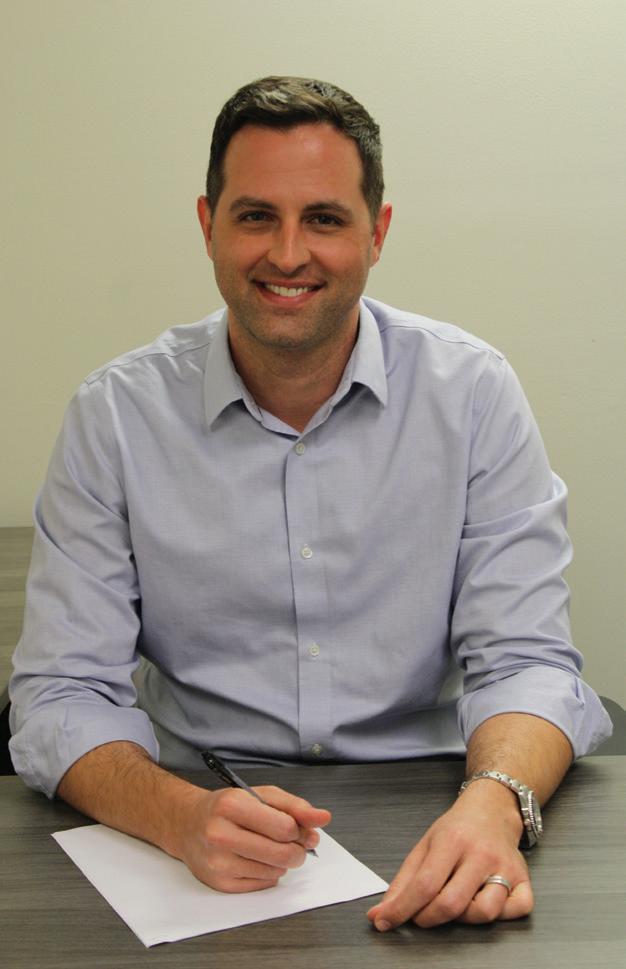

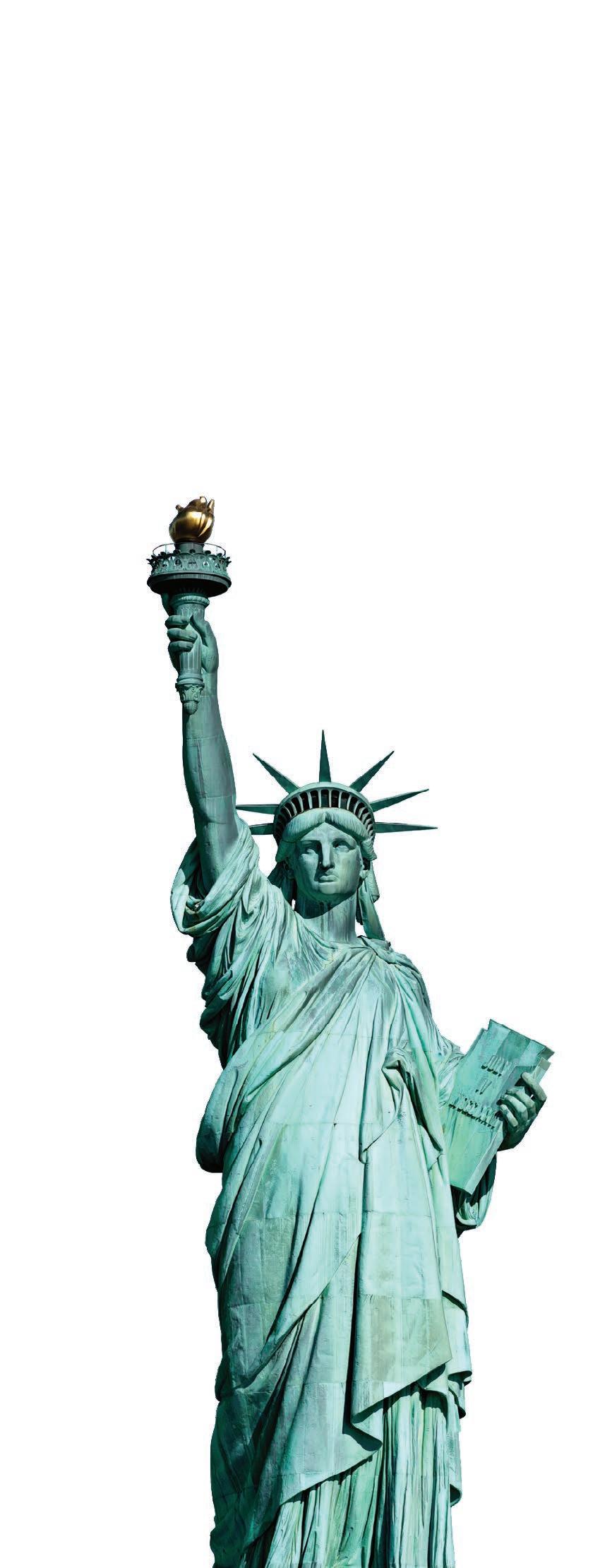

says Jamie Gilpin who earned a bachelor’s degree in public relations from the FSU College of Communication and Information in 2001. Since 2018, Jamie has served as the chief marketing officer (CMO) at Sprout Social, a leading provider of cloud-based social media management software.

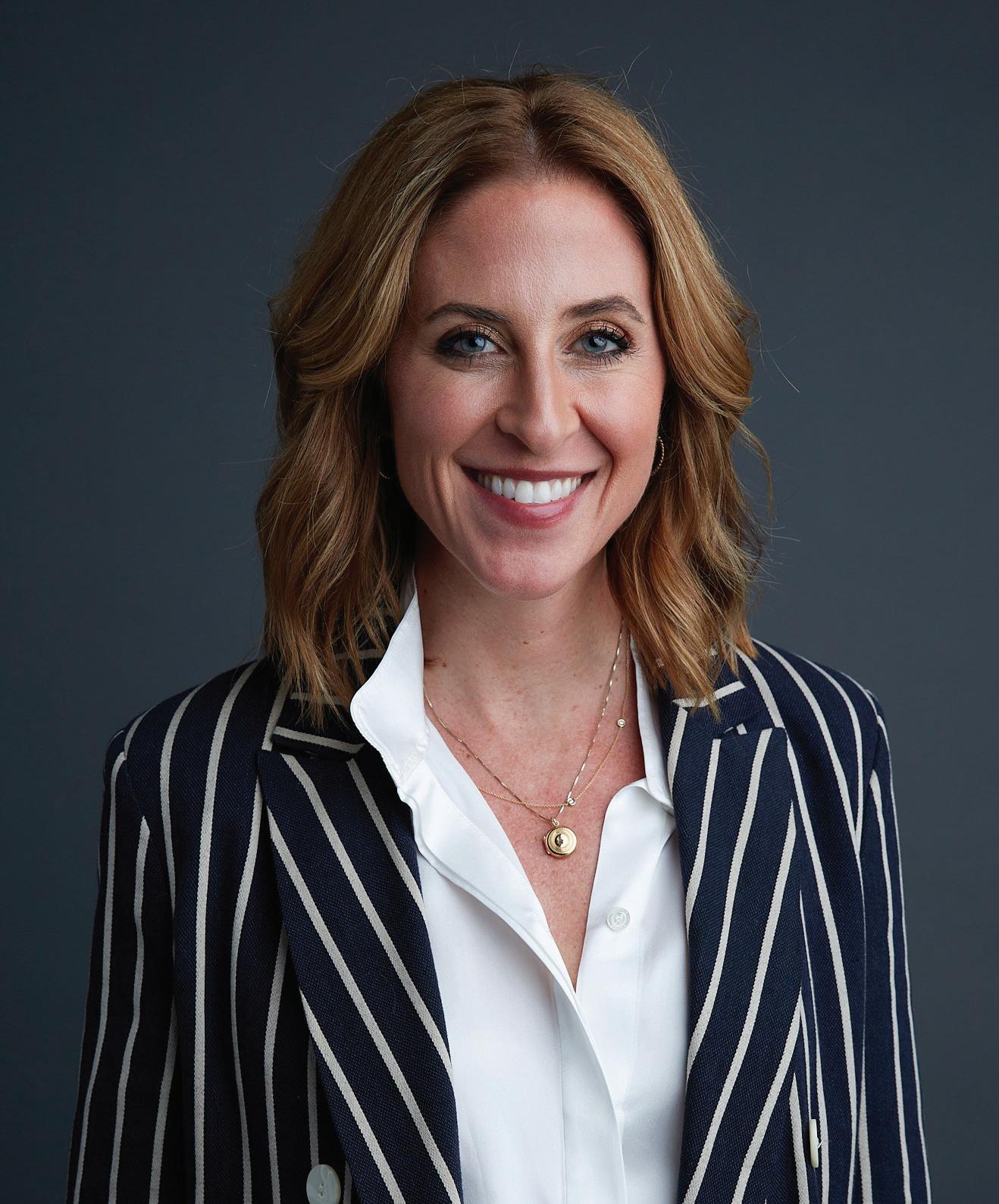
As the CMO at Sprout Social, she oversees brand awareness and marketingdriven revenue growth across new businesses and Sprout’s customer base. ”
Gilpin recognizes that technology fuels every part of the customer experience and is vital to how marketers do their work. “To market technology, you have to understand it from every angle, not just what the technology does for your customers, but how your team builds it better than your competitors,” she says. “We have to be technologists, data analysts, strong storytellers and communicators.”
Gilpin credits her undergraduate experience for helping her get where she is professionally. Her degree in public relations provided a great foundation for what she does today. “Beyond the PR practice, communication skills are mission critical for any role that you take in an organization.”
and life skills and a strong network because of my time there.” Gilpin was involved as a student, holding membership in several organizations including, Delta Gamma, Order of Omega, Student GovernmentSAFE Connection, Omicron Delta Kappa National Honor Society and Mortar Board. A natural leader, she often held leadership roles. “That experience prepared me for the leadership roles I have held professionally.”
better connections with their audiences, bring efficiencies to their teams and workflows and bring a higher fidelity of insights from their data.”
Earlier this year, FSU onboarded an enterprise plan for Sprout Social. By leveraging Sprout, she hopes FSU can further communicate and elevate its reputation in research, academics and innovation and effectively measure impact as the university continues to invest in its brand.
“To connect my passion for FSU with my passion for Sprout Social and the value we bring to our customers, is absolutely incredible.” says Gilpin. “I take so much pride in bringing two of my favorite organizations together.”
But more than that, her experience at FSU shaped her as a person. “I have lifelong friends, invaluable leadership LEARN MORE
In her professional career, Gilpin has seen marketing as a discipline evolve dramatically. Game-changing advancements have been made in artificial intelligence (AI) and machine learning, which Gilpin says will bring outsized value to companies across all segments and industries. “The opportunities are vast as we think about the power AI will have in enabling our customers to create
“STEM is part of everything I do,”
Lee Corso (B.S. ’57, M.S. ’58), one of college football’s most entertaining analysts and a long-time member of ESPN’s college football team, was inducted into the National Sports Media Association’s Hall of Fame. He is best known for serving as an analyst on the eighttime Emmy-Award winning “College GameDay,” the network’s signature Saturday morning show originating from the site of one of the day’s best storylines.
Budd Titlow (B.S. ’70) and his eldest daughter, Mariah Tinger, co-authored “Coming Full Circle: A Sweeping Saga of Conservation Stewardship Across America.” The book aims to illuminate “the origins of our current conservation crises—climate change and biodiversity loss—while convincing readers that we have immediate solutions at our fingertips.”
M. Leigh Smith (B.S. ’72, MBA ’73, MSW ’82) recently published a book titled, “The One Minute Therapist,” which is intended as a self-help book and a guide for therapists in working with people. It is the accumulation of Smith’s 40 years of experience in helping individuals, couples and families create a more well-balanced [KJ3] for themselves.
“William Dawson: American Music Educator” by Mark Hugh Malone (B.S. ’74, MME ’79, Ph.D. ’81) was published by the University Press of Mississippi.
Michael G. Stephens (B.S. ’91) was promoted to chief human resources officer at Alston & Bird LLP in Atlanta, Georgia. In the role, Stephens handles stock plans, executive employment agreements and deferred compensation arrangements and has extensive experience with compensation issues in M&A and other corporate transactions.
partner. Ian Leaderman has been with Jones Jones for over five years and is based in the firm’s Manhattan offices.
Amy Sara Cores (B.A. ’97, M.A. ’00) opened the MadJam Music & Entertainment Law LLC law firm, focusing on transactional intellectual property matters, particularly for musicians and artists.
exemplary achievement and leadership in hospitality sales, marketing, revenue optimization and distribution.
Malone is a veteran music educator with over 46 years of classroom experience from primary to postsecondary. He will present the William Dawson lecture and recital at the FSU College of Music in October 2023.
Lonnie Groot (B.S. ’73, J.D. ’76), a Daytona Beach Shores attorney, served as a judge in the 2022-2023 American Bar Association’s Mediation Competition. The competition introduces student participants from law schools nationwide to the challenges of representing clients in mediation. Groot also recently instructed the City of Sanford’s Race, Equality, Equity and Inclusion Committee on the laws of open government and transparency at its inaugural meeting.


Dianne Wall [KJ4] (M.M. ’78) published her first book, “Somebody Told Me I Could: A Polio Survivor Who’s in it For The Long Haul.” The book focuses on Wall’s life experience, being born with polio and now living with Post-Polio Syndrome. Wall is a recording artist, music therapist, music educator and motivational speaker based in Winter Springs, Florida.
The Hospitality Sales and Marketing Association International (HSMAI) will honor Andrew Rubinacci (B.S. ’91)with the prestigious Vanguard Award for Achievement in Revenue Optimization. Rubinacci is the executive vice president of Commercial and Revenue Strategy of Aimbridge Hospitality.
Faith Eidse (M.A. ’95, Ph.D. ’99) published “Deeper than African Soil,” a memoir of Eidse fleeing the Congo’s 1964 revolution as a child separated from missionary parents, taking leprosy therapy in secret and surviving boarding school trauma. Her memoir won Florida State University’s Kingsbury Award and the FSU English Department’s best thesis of the year. Reviewers called it “honest,” “courageous,” and “a killer of crossing cultures and living a vivid African life.”
Florida State University’s vice president of Student Affairs Amy Hecht (B.S. ’01) received the John Jones Award for Outstanding Performance as a Senior Student Affairs Officer from NASPA Region III. The award honors individuals who have made significant contributions to the field through publications or involvement in professional associations.
Jones Jones LLC, a leading defense law firm representing insurance carriers and self-insured employers, promotes longtime firm associate Ian Leaderman (B.S. ’97) to
Shawn Demers (B.A. ’00, J.D. ’03) and Eisele Ibarra (B.S.’16, J.D.’21) have joined GrayRobinson’s Litigation section. In the firm’s Melbourne office, Demers focuses his litigation practice on corporate, real estate and other business transactions. In the firm’s Orlando office, Ibarra focuses her commercial litigation practice on complex disputes stemming from construction, breach of contract, business torts, real estate and corporate transactions.
Jean C. Accius (B.S. ’02, M.S. ’03) was recently announced as Creating Healthier Communities’ new president and CEO. Accius previously served as senior vice president for AARP Thought Leadership and International Affairs. His areas of expertise include aging, caregiving and longterm care policy.
Alex Dominguez (MPA ’05) was selected as a member of the 2023 class of the Orange Bowl Committee. Professionally, Dominguez serves as AT&T’s State Director of External and Legislative Affairs in Miami, Florida.
The Hospitality Sales & Marketing Association International (HSMAI) has selected Edelyn Parker-Frye (BFA ’05), director of brand events, communications and partnerships at Red Roof, as one of its “Top 25 Extraordinary Minds“ for 2022. This is the 20th year HSMAI has compiled the list, annually recognizing
Smith Hulsey & Busey promotes attorney David W. Roberts (B.S. ’06) to shareholder of the firm. Roberts is a member of its corporate and real estate practice teams. He advises clients on mergers, acquisitions and other complex business transactions.
Brinkley Morgan promotes attorney Matthew S. Kramer (B.S. ’07) to partner of the firm. Kramer is a member of the firm’s Real Estate and Corporate Law group, focusing his practice on representing lenders, borrowers, sellers, buyers, landlords, tenants and businesses in various real estate and business transactions and disputes.
Daniel Crane (M.S. ’08) joined Lewis Roca as a partner in the firm’s litigation practice group in Phoenix. Crane focuses on general commercial litigation, emphasizing business acquisition disputes, partnership disputes and intellectual property litigation. Dallas-based regional carrier JSX names Suresh Narayanan (B.S. ’08) chief operating officer. In his new role at JSX, he will support the leaders in all operations and the company’s future growth plans and expansion. Narayanan is also a former Young Alumni Award winner and 2021 Reubin O’D. Askew Young Alumni Award recipient.
KNWA/FOX24 and Pig Trail Nation’s Alyssa Orange (B.S. ’09) was selected as Sportscaster of the Year by the National Sports Media Association. Orange is the main anchor and co-sports director for the Pig Trail Nation.
Ball Janik LLP promotes Jeffrey A. Widelitz (B.S. ’09) as a partner of the firm. Previously an associate at
the firm, Widelitz has made “outstanding contributions with extraordinary service to clients and commitment to Ball Janik,” says Jim Prichard, managing partner at Ball Janik LLP.
Zerric Clinton (Ph.D. ’10) recently published “The Power of Popular Culture in Education: History, Music and Visual Imagery.” Described as “a comprehensive resource covering topics including popular culture, history, visual imagery and music,” the book highlights research on using popular culture in classrooms to engage students.
Arkansas Baptist College Board of Trustees has named Calvin McFadden (Ph.D. ’10) the college’s 16th president. McFadden’s experience in higher education includes serving as an academic dean, chief of Student Affairs, dean of Behavioral and Social Sciences and associate professor at several institutions, including Florida A&M University, Springfield College, Smith College and Norwalk Community College.
Morgan Smith (B.S. ’10) has joined Foran Glennon’s Chicago office as partner. Smith focuses her litigation practice on complex commercial, subrogation and loss recovery, product liability, mass tort and breach of contract claims.

Attorney Matthew S. Cassman (B.S. ’11) has joined the civil litigation team of Ragsdale Liggett in Jacksonville, Florida as an associate. His civil practice focuses on insurance defense, including personal injury, premises and product liability, construction, trucking and transportation. Matt brings over six years of experience as a claims and contract attorney in large and small firms and in-house counsel.
Robyn Metcalf Blank (BSW ’13, MSW ’15, MPA ’15) joined the Griffin Group as a principal with the firm, leading their nonprofit and education practice. Blank has over a decade of experience advocating and developing solutions to improve outcomes for Florida’s most vulnerable children.
Yeman Brown (BFA ‘14) performed in the opera “Alceste” for Opera Roma in Rome, Italy. Additionally, Brown served as the assistant choreographer for the first national tour of the Jagged Little Pill musical. Shelburne Museum establishes Victoria Sunnergren (B.A. ’16) as the museum’s first associate curator of Native American Art. Sunnergren will lead the exhibition of the museum’s Indigenous art and material culture collection in her new position. Sunnergren will also guide the museum’s program in collaboration
with an advisory board of Indigenous artists and advise the museum’s agenda with an advisory board of Indigenous artists, curators and community leaders.
Trent Montgomery (MFA ’20), a performer in the Les Ballets Trockadero de Monte Carlo, the World’s foremost all-male comic ballet company, performed on their worldwide tour, including on the stages of the Opera de Lausanne in Switzerland and the Gran Cabaret stage of the Festival Internacional de Artes Escénicas’. The company will tour again in 2024.
Creg Slavi [KJ5] (MFA ’20) recently became the associate director for “Next to Normal” at Paramount Theatre. Other accolades include being the vocal director for Royal Caribbean International and a teaching artist for Trollwood Performing Arts School.
Wilson Creative Group, a full-service advertising and marketing agency, has promoted Gabriela Rivas (M.A. ’21) to account manager. In this role, she is responsible for operating as the lead point of contact for client matters, maintaining trusted advisor relationships with key accounts and customer stakeholders, overseeing client account management and ensuring the timely and successful delivery of solutions according to client needs and goals.
Associate professor Eugenia Millender, Ph.D., co-founder and co-director of the Center of Population Sciences for Health Equity at the College of Nursing, is one of 60 scholars who will form the Presidential Leadership Scholars’ eighth annual class.
Rufina Alamo, Ph.D., and Rob Spencer, Ph.D. were elected by their peers to the 2022 Fellows class in recognition of their contributions to science, engineering and technology. Alamo is the Simon Ostrach Professor of Engineering and a distinguished research professor of Chemical and Biomedical Engineering at the FAMU-FSU College of Engineering. Spencer is a professor in the Department of Earth, Ocean and Atmospheric Science at the College of Arts and Sciences.

Ruby Lee, Ph.D., a professor in the Dr. Persis E. Rockwood School of Marketing, has received a Fulbright award for the 2023-2024 academic year. Lee will spend seven months teaching and studying in the country of Kosovo.

Ravinder Nagpal, Ph.D., assistant professor at the College of Health and Human Sciences, spoke at the international scientific webinar “GutImmune-Brain Axis in Neurological Disorders,” organized by the Journal of Microbiome Research Reports.
Dawn Carr, Ph.D., in the Department of Sociology at the College of Social Sciences and Public Policy, was awarded the W. Fred Cottrell
accolades of the faculty and staff at Florida State University.Rufina Alamo, Ph.D.
Distinguished Gerontology Alumni Award for outstanding leadership and achievement in the field of aging by the University of Miami’s Scripps Gerontology Center.

Russell Clayton, Ph.D., associate professor of Communication at the College of Communication and Information, received FSU’s 20222023 Distinguished Teacher Award during the annual Faculty Awards Celebration.
Mike Killian, Ph.D. at the College of Social Work, received a $1,676,046 Small Business Innovation Research Grant from the National Institutes of Health for his project “Mobile Video Directly Observed Therapy for Immunosuppression Medication Adherence in Adolescent Heart Transplant Recipients in Florida: Enhancing Technological Innovation and Strengthening the Role of Small Businesses in Meeting Needs of Adolescent Organ Transplant Recipients.”
Mark Horner, Ph.D., a professor in the Department of Geography, has won the 2023 Edward L. Ullman Award from the American Association of Geographers. Horner is the first Florida State faculty member to receive the honor.
Hedi Mattoussi, Ph.D., professor in the Department of Chemistry and Biochemistry, is part of a team led by FSU chemists developing a new test for detecting biological markers related to several types of cancer. Their research was recently published in the Journal of the American Chemical Society.
Lynn Panton, Ph.D., at the College of Health and Human Sciences, was recognized with the 2023 Henry J. Montoye Scholar Award from the Southeast Chapter of the American College of Sports Medicine.
Wen Li, Ph.D., associate professor of Psychology and Neuroscience in the Department of Psychology, has been awarded $5.7 million to conduct two research studies that will give scientists a better understanding of the brain mechanisms surrounding posttraumatic stress disorder and pain, paving the way for safer, more effective treatment options.
Nicolette Castagna, LMHC, MPH, CDP, at the College of Medicine, co-authored the article “Connecting with Clients in Later Life: The Use of Telebehavioral Health to Address
Older Adults’ Mental Health Needs,” published in the Adultspan Journal.
Henna Budhwani, Ph.D., at the College of Nursing, was appointed to the Society for Adolescent Health and Medicine Research Council for three years.
Lea Nienhaus, Ph.D., assistant professor of Chemistry and Biochemistry, earned the Faculty Early Career Development Award from the National Science Foundation for her research into light-matter interactions in semiconductors with the long-term goal of improving solar cell efficiency.
Patricia Homan, Ph.D., in the Department of Sociology, coauthored “Empirical Evidence on Structural Racism as a Driver of Racial Inequities in COVID-19 Mortality,” published in the Frontiers in Public Health Journal.
Joe Grzywacz, Ph.D., at the College of Health and Human Sciences, was a keynote presenter at the United Nations’ annual briefing of the International Federation for Family Development—the IFFD briefing connected family science to overcoming societal inequalities and recovering from the COVID-19 pan
Mickey Langlais, Ph.D. at the College of Health and Human Sciences, co-authored “To Scroll or Not to Scroll: Examining Social Media as a Mediator for Attachment Security and Internal Stress,” published in the American Journal of Social Sciences and Humanities.
Mike Drury, Psy.D., Nicki Taylor, Ph.D., and Cheryl Porter, Ph.D., at the College of Medicine, co-authored the article “Medical Students’ Perception of Psychotherapy and Predictors for Self-Utilization and Prospective Patient Referrals,” published in Behavioral Sciences.
Juyeong Choi, Ph.D., an assistant professor in the Department of Civil and Environmental Engineering in the FAMU-FSU College of Engineering, will lead a $75,000 National Science Foundation-funded study examining debris collection and illegal dumping in the aftermath of Hurricane Ian, a Category 4 storm that hit southwestern Florida in 2022.
Sastry Pamidi, Ph.D., at FAMUFSU College of Engineering, was selected to serve on the Cryogenic Society of America board. His fiveyear term began this spring.
Harriette Martin McCarter (B.A. ’46, M.A. ’52) passed in April of 2021 at Westminster Oaks, Tallahassee, where she had been a resident for several years. As an elementary teacher, she taught for a total of forty-four years in the Leon County School System, the FSU lab school where she was affiliated with the College of Education in teacher training, at Holy Comforter Episcopal School and as a Fulbright Exchange Teacher in England. Her career in education was followed by 20 years of dedicated volunteer service to Big Bend Hospice.
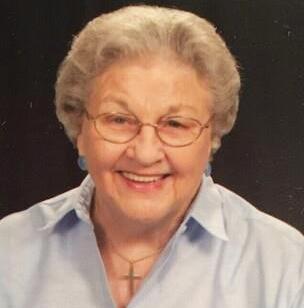
Catherine Knutson Brown (BSW ’68) passed away in August of 2022. Brown was known for her “ enthusiasm, curiosity and abiding sense of humor.” Brown pursued many passions, most of which in dedication to her family and community. Over the years, she was a Donut Dolly during the Vietnam War, a secretary at Stanford University, a stay-at-home mom of two daughters, Kate and Emily, a realtor and Vice President of Training, a volunteer-atlarge and board member with multiple governmental and nonprofit agencies in St. Augustine and the Executive Director of the St Johns County Council on Aging.
Nancy Isidoro Sharkus (B.S. ’72) passed away in February of 2021. Sharkus held a long career with the National Library of Medicine (NLM) as an employee and contract medical indexer supporting NLM with various companies for 35 years, including 20 years with Kelly & Dewitt Inc. She also completed the Associate of Applied Science in Culinary Arts program at the Northern Virginia Community College in Annandale, Virginia.
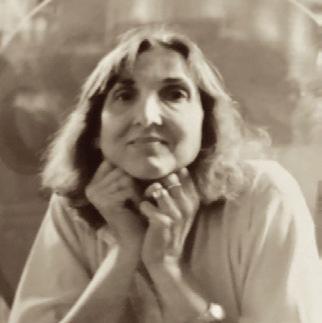
George Alfred Winterling (B.S. ’57), who passed away this June, was a United States Air force veteran, American television meteorologist and the creator of the “heat index.” A pioneer in the field of TV meterology, winterling was known as “kind, intelligent, humble and charitable” and “instrumental in many of the emergency preparedness measures we have in place today." Winterling helped develop modern forecasting and was a staple in the region for reliable reporting, including predicting Hurricane Dora in 1964. Winterling served as Jacksonville’s WJXT-4′s first chief meteorologist and held the position for 47 years before retiring in 2009.

For more than 25 years, Pamela W. Graham MacDill (MSW ’77) served as a dedicated faculty member and administrator with the FSU College of Social Work before retiring in 2020. She passed away in April. During her tenure, she served as the BSW program director, developed a Minor in Social Welfare and created and chaired the Child Welfare Practice and Leadership in Executive and Administrative Development certificate programs. She was also instrumental in establishing Unconquered Scholars, a program within the FSU Center for Academic Retention and Enhancement. MacDill is remembered fondly by countless colleagues, friends and students.
Gifts can be made in her honor to the MacDill-Wold Unconquered Scholarship Fund.
GIVE TODAY give.fsu.edu/macdillscholarship
Dr. Patricia Malone (D.M. ’81) passed away in January. After receiving her Doctor of Music degree from Florida State University, Malone went on to have a long career as an oboe professor at the University of Southern Mississippi in Hattiesburg, during which she was named Professor Emeritus after 26 years of teaching.


Michael Goldberg (B.S. ’88), lauded advertising executive at the likes of Deutsch and Zimmerman, died unexpectedly this June. Goldberg, most recently a principal at Rojek Consulting, was known as “ a rare person who people respected and loved at the same time—someone whose presence meant as much as his accomplishments,” and “a rare breed of an advertising executive who balanced a keen sense of competition and new business acumen with an innately human side.”

Winter Park businessman, artist and scholar Christopher Allen Holler (B.S. ’91), passed away this June. He was Vice President of the Holler-Classic Automotive Group and Co-President of real estate operations. Holler, a Gideon, was known as a “loyal, kind and humble” man who spread “the Living Word of God to others” and shared “his love of Christ.” In 1996, Holler was bestowed as a Knight Grand Commander of the Sovereign and Independent Order of St. Andrew of Jerusalem, which honors those who give selflessly to Christian charitable endeavors.

Senior associate dean of the College of Medicine, Dr. Daniel Van Durme, or “DVD,” passed away in May. Van Durme was known for being “a great person, wonderful human being and doctor” and having “a playful personality and larger-than-life presence.” More than the college’s chief medical officer, a faculty advisor to Students Interested in Global Health or the past president of the Florida Academy of Family Physicians, Van Durme was a mentor to thousands of family physicians during his career at FSU.
Gifts can be made in his honor to the Daniel Van Durme, M.D., Memorial Scholarship Fund
GIVE TODAY give.fsu.edu/VanDurme
Associate professor of History Dr. Laurie M. Wood passed away this June. Wood was a beloved professor known as a “wonderful professor who cared for all her students.” She taught courses in Atlantic, Indian Ocean, Early Modern European and World History at FSU. She was the author of the award-winning monograph “Archipelago of Justice: Law in France’s Early Modern Empire.” Wood also held fellowships at Princeton University, the University of Delaware and the Library Company of Philadelphia. Additionally, as a member of Resurrection Philadelphia, she developed short courses on seeking a vocation and the history of race-related protest in Philadelphia. Information regarding gifts to history education at Florida State University and breast cancer research are forthcoming.

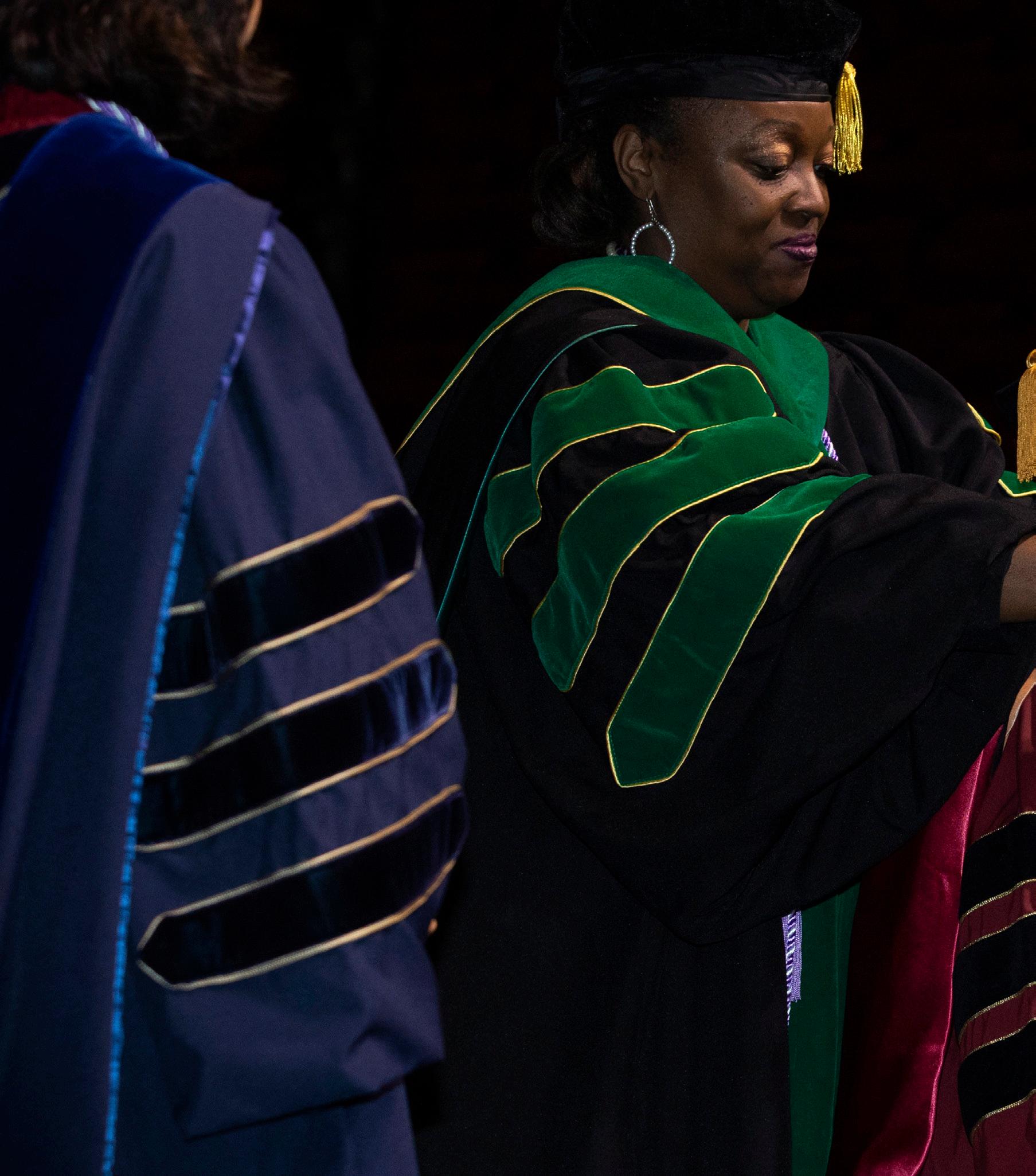
Summer commencement marked an incredible milestone for Florida State University. As of August 4th, FSU now has over 400,000 living alumni worldwide. All graduates of FSU are members of the FSU Alumni Association; no dues required. Alumni can stay connected through the Alumni Association’s career resources, networking opportunities, mentorship programs, travel benefits and more. Alumni can get involved at alumni.fsu.edu.
Pictured, FSU College of Nursing Clinical Associate Professor, Geneva Scott-King hoods graduate Rachel Sharpe (B.S. ’18, DNP ’23) during the inaugural Doctoral Hooding ceremony.

Florida State University Alumni Association
1030 West Tennessee Street
Tallahassee, FL 32304-7719
alumni.fsu.edu
with a Master’s Degree in Business
The Florida State University College of Business offers flexible formats tailored for working professionals and full-time programs that can be completed in one year — including three designated as Science, Technology, Engineering or Mathematics (STEM) degrees. New! GMAT entrance exam optional for online programs.

• Accounting (MAcc) | On campus | STEM
• Business Administration (MBA) | On campus or online
• Business Analytics (MS-BA) | On campus | STEM

• Finance (MSF) | On campus | STEM
• Management Information Systems (MS-MIS) | Online

• Risk Management and Insurance (MS-RMI) | Online Apply today!
COLLEGE OF BUSINESS Graduate Programs
